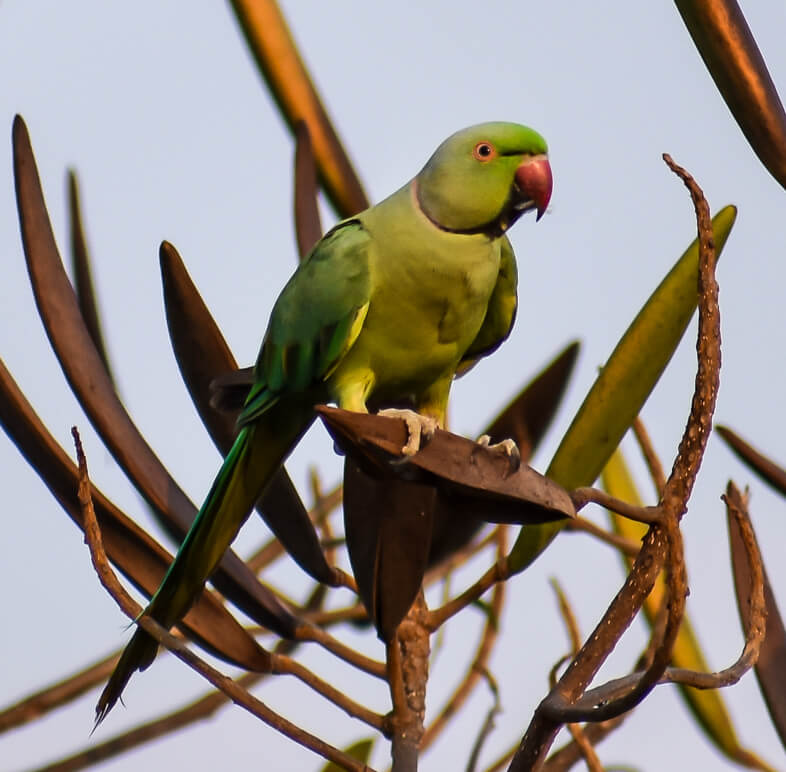Indian Ringneck Parrots: In Photos And Memories
While I was growing up my home had a little green Indian ringneck parrot. We called him Mithu. That’s the Hindi name for Indian parrot bird. No originality there but Indian homes rarely named their pets (things are changing now).
My Pet Mithu: An Indian Parrot With Taste
My friends ask me the names of my father’s two pet cows. And in the absence of anything else I tell them Badi and Chhoti. Big and small. They were mother and daughter. Those were not the names of the cows but rather our way of identifying them. Who is sliding the latch with her tongue? Must be the younger one, Chhoti. Who got angry today when she got her hay ten minutes late? Must be the mother, Badi.
Despite his common name, Mithu was special. While we all walked on the floor and ate chapatis for lunch, mister swung around in his cage near the guava tree and ate butter and chilies and guavas. If I got home from school late he shrieked and shrieked. And if I returned to find his cage empty I shrieked and shrieked. My uncle often used to unlatch the tiny door of his iron cage. He would jump out looking for all sorts of trouble.
“Where is Mithu?” Everyone wondered. Only my mother could locate him. Many times she found him camping in my trousers drying in the sun. She pulled him out and I was shaking ten feet away standing on a wooden stool.
I’m scared of birds. I mean I love them. I adore them. But I’m frightened of them flying too close to me. The thought of their wings flapping in front of my face is enough to send me panicking. And if my friends and family laugh at my very-rational fear then the joke is on them.
Mithu couldn’t fly. My mother had found him in our garden one morning. She used to pick up strange lost birds from our garden all the time. She fed them and comforted them for a few hours. When she was sure they would make it on their own, she opened her palms and let them fly into the sky.
When my mother found out that Mithu’s wings had been cut, she asked my father to bring a cage. From then on Mithu became a family member.
Mithu was a green Indian ringneck parakeet. Which just means he had a red-black ring around his neck. Indian ringnecks (like all parakeets) are also parrots with medium-sizes and long tails.
For as long as I remember Mithu was always there. He couldn’t go out but groups of Indian parrots visited him. His friends perched on his cage and the guava tree. They all chirped together in symphony and even picked up carrots and mangoes strewn around in Mithu’s den. Even female parrots came and Mithu rejoiced and screeched from his swing.
Mithu had mature tastes for a bird. When my mother churned the buttermilk to make butter, he kept calling her until she brought him some on her finger. Morning and afternoon tea had to be first served to Mithu or else he wouldn’t let us drink it. Sometimes he also had water and chilies.
When it rained we brought him inside. In the winter we kept his house near the fire and at night covered his cage with a cloth to keep him warm and cozy.
One day when his cage was open Mithu fell in the garden. By the time my mother saw, a cat had ambushed him. She brought him up only to find him lifeless. When I returned from school, I found the cage empty and no one was roaring out to me. I thought Mithu had gone out on one of his adventures. But then I saw my mother sitting with her head on her knees. There was no lunch. She told me they had already buried him.
We took Mithu for granted. Now he isn’t here and what I wouldn’t give to have Mithu torture my mother to give him butter again.
On the note of the things we have lost, I hope these 27 photographs that show nature defying Climate Change inspire you to love it even more.
Life of Indian Green Parrots
So now whenever I see parrots flying around me my heart goes out to them. I click their photographs. I watch them for hours. They make me happy and I’m so lucky to have so many always near me.
But the saddest thing is when you search for “parrots India” you discover that the most searched queries are Indian ringneck parrot price, indian ringneck parakeet for sale, where to buy Indian parakeets, and Indian talking parrot et cetera.
Indian parrots are popular as pets. Many people steal little parrots from their nests. Parrots make nests in holes of tree trunks, high up in the walls, and domes of buildings. So pretty much about anywhere where they can get inside and come out without anyone seeing them. Of course we humans see them all so some of us pick them up to sell. Though selling Indian parrots is illegal they are still sold in discretion.
Even now you can find a parrot hung on a balcony in his own little cage. One used to call me whenever I crossed his house in Bangalore (some crazy Bangalore images here). And just yesterday I was surprised to see fortune tellers sitting on the roadside in Pondicherry with their tiny enclosures holding a green parrot each (parrot fortune-telling is an old tradition in India).
One fortune teller gestured me to go near him. I pointed to the parrot and mimicked flying by flailing my arms up and down. That was the most I could help the parrot bird. If I had gone to him he would have told me how desperate he was. I couldn’t have helped the parrot even by paying for him because they must have cut his wings.
Images of Indian Parrots
This parrot blog is a tribute to the one parrot I knew and loved like a little brother. Mithu was a whole eccentric being of his own and I wish I could hold him in my palms just this once. I wouldn’t be afraid now.
These Indian parrot images are from all around India. In most photos parrots are seen in groups or at least a few together. Parrots live in huge communities. You can see flocks of Indian red neck parrots flying home in the evening. Together they fly low chirping continuously. I have even seen parrots in forests. The big ones fly to their tree hole and scooch inside when they are sure no one is watching them. Then they fly out and come back again. The feeding cycle goes on all day long.
When the parrot chicks are big enough you see the little ones come out to the edge of the holes. They open their beaks asking for food and their parents push the meal in their mouth.
In the forest near my Bangalore house, I saw a lot of Indian ring neck parrots. One or two would come first. Then a few more. Then more. They perched on different branches of the African Tulips and Copper bean trees. Some licked beans, others dug into flowers, and the rest just dozed off. I had so much fun watching them I would often lose track of time.
I have seen parrots in almost all states of India. Here you will see Indian redneck parrot photos from Uttar Pradesh, Uttarakhand, Himachal, and Karnataka. Parrots are of different colors in different parts of the country though. So North India has the green ones with red rings around their necks (only males), Nilgiris in the South has blue parrots. In Himachal, I saw plum-headed parrots and some with triangular red strikes on their wings. They are all damn gorgeous.
Recently, I visited the Shukartaal temple with my parents. A 5100-year-old banyan tree overshadowed the temple. Perhaps hundreds of parrots lived on that banyan and they all peeped together. Flying from one branch to another or getting into their nest they were constantly in action. They all seemed to have their nest holes in that tree. It was like watching a parrot uprising.
I hope you enjoy these photographs as much as I enjoyed watching the parrots. I have divided the photos into stories and scenes as I saw them.
When you imagine Bangalore, you might see imposing concrete towers, giant tech parks, and bumper to bumper traffic. But these pictures from Bangalore will make you think about the software city differently, force you to take out your camera wherever you are, and head off to a park.
Scene 1, Bangalore Karnataka
I saw these two couples hanging out on the berry tree in front of my rooftop in Bangalore. They were pretty shy and conscious of me clicking their photos. But didn’t stop eating for a moment.
The males have the black-red rings around their necks.
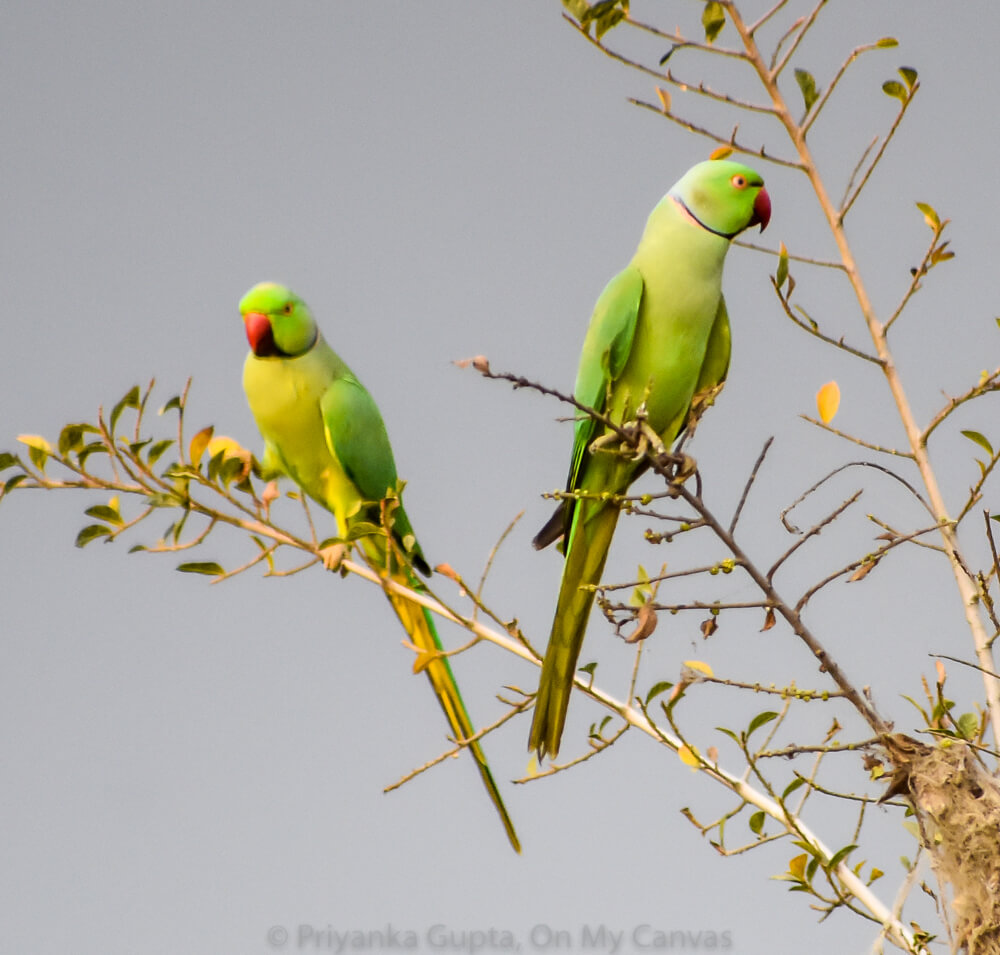
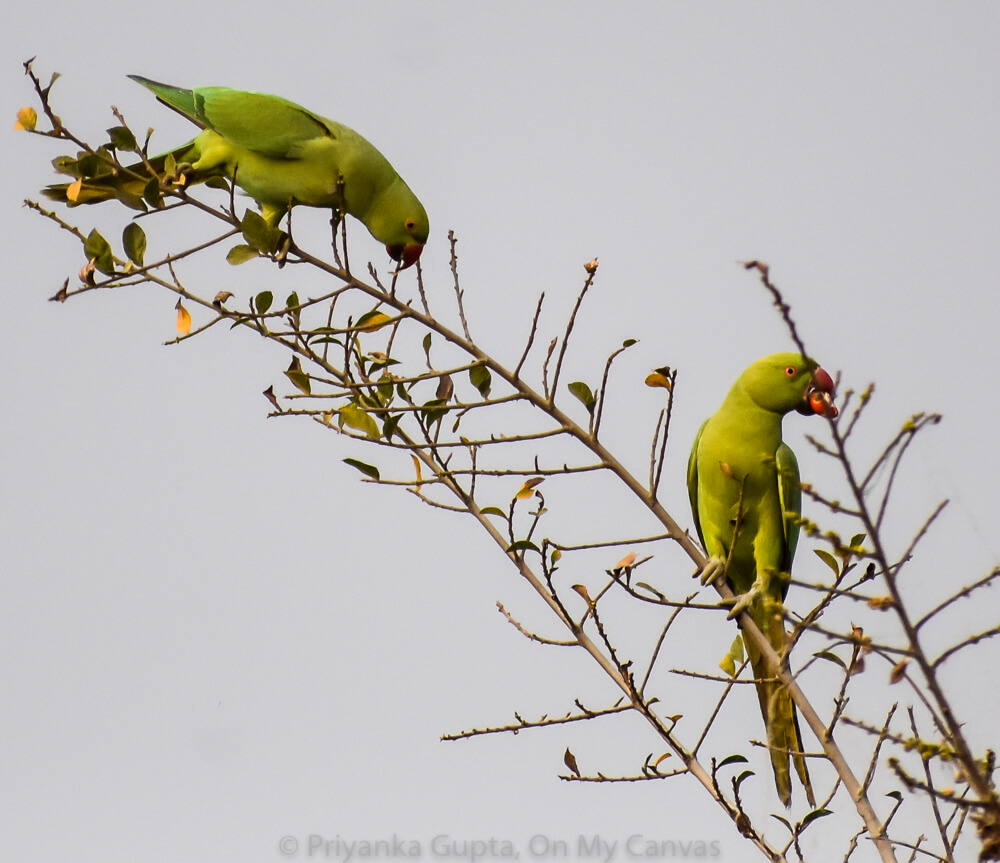
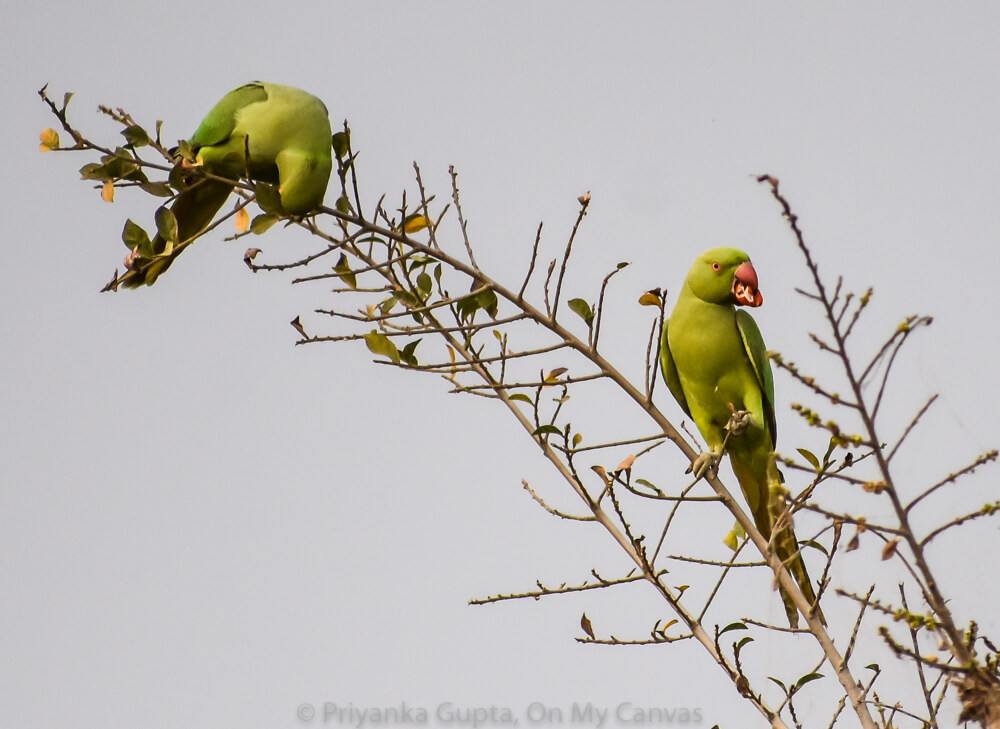
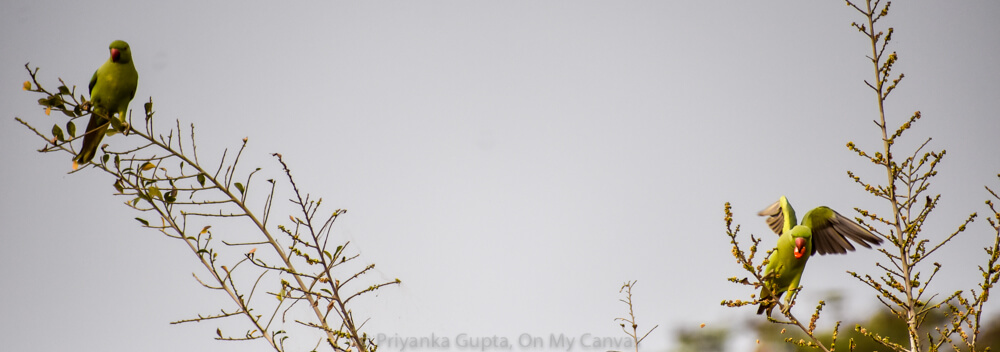
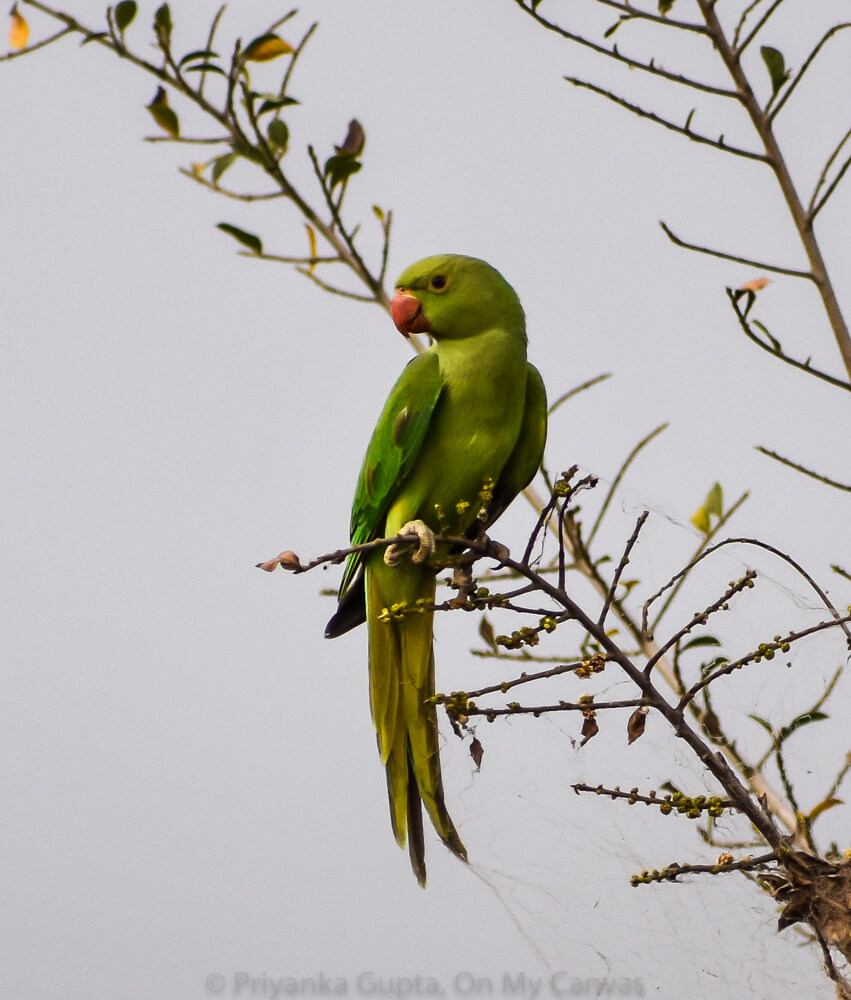
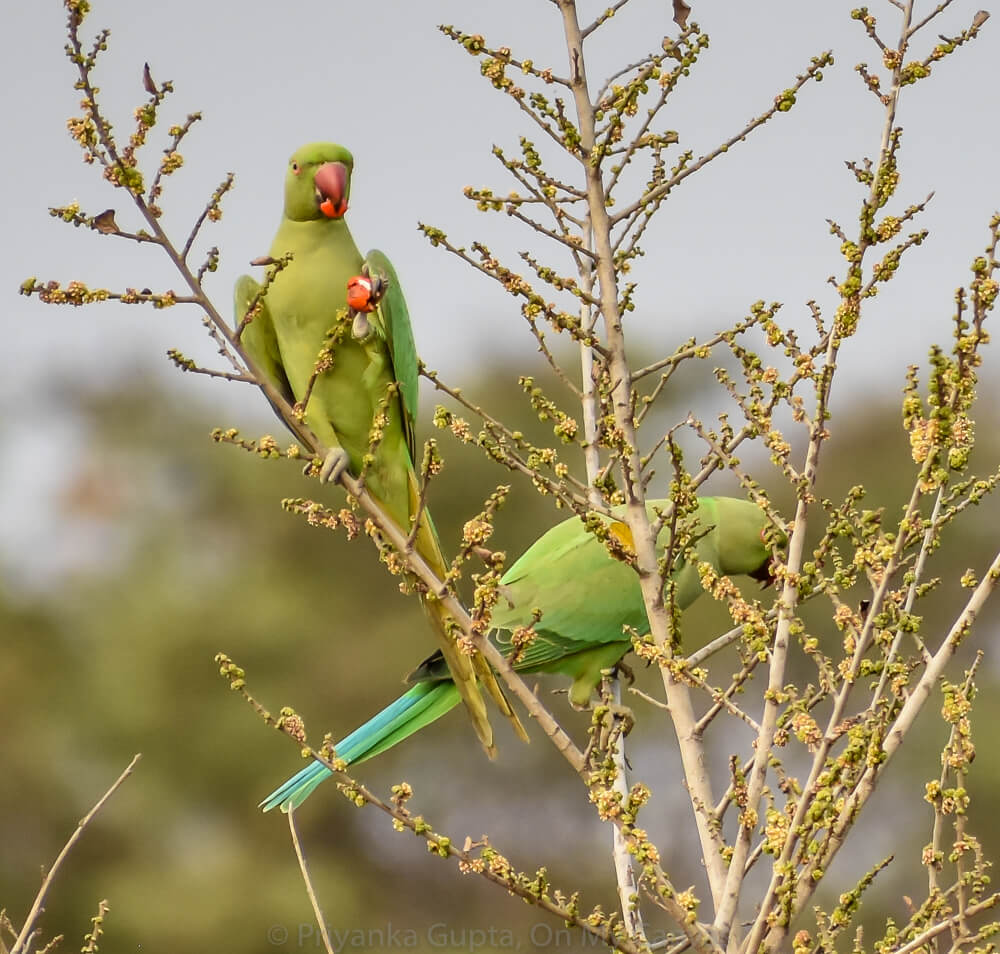
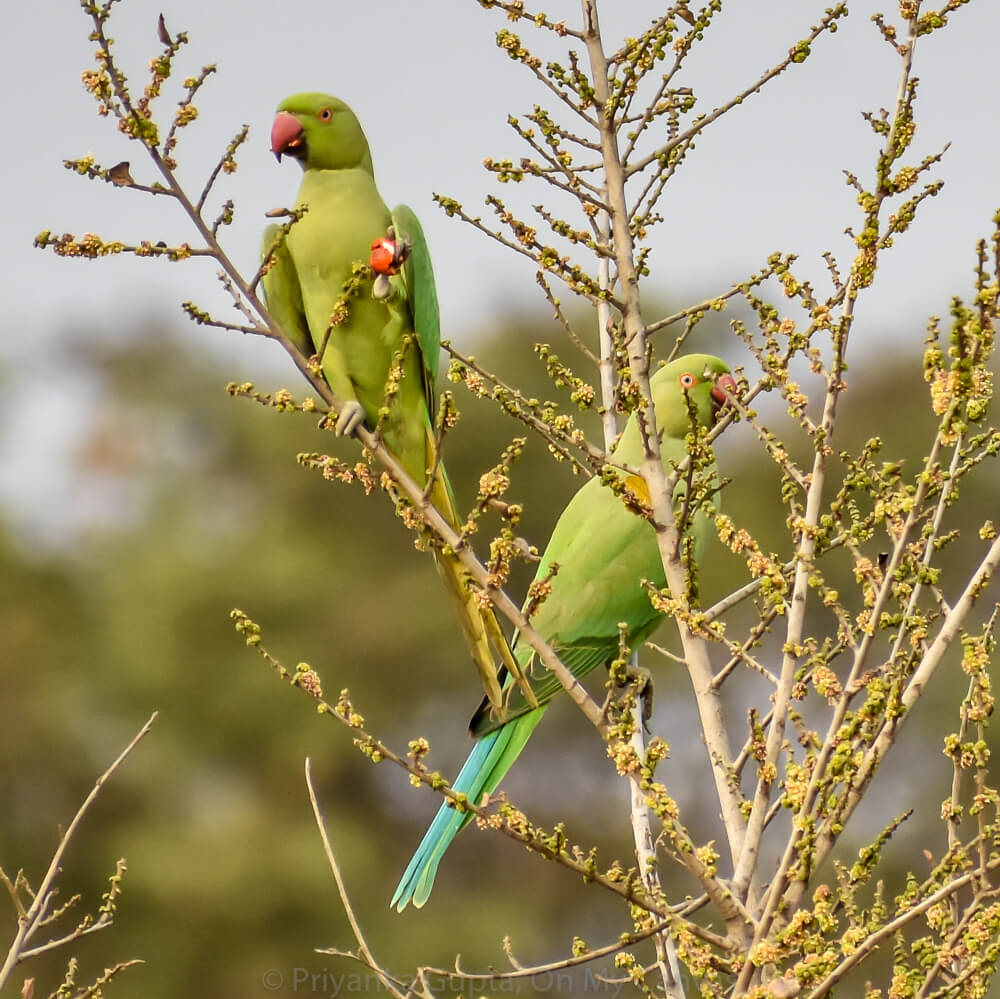
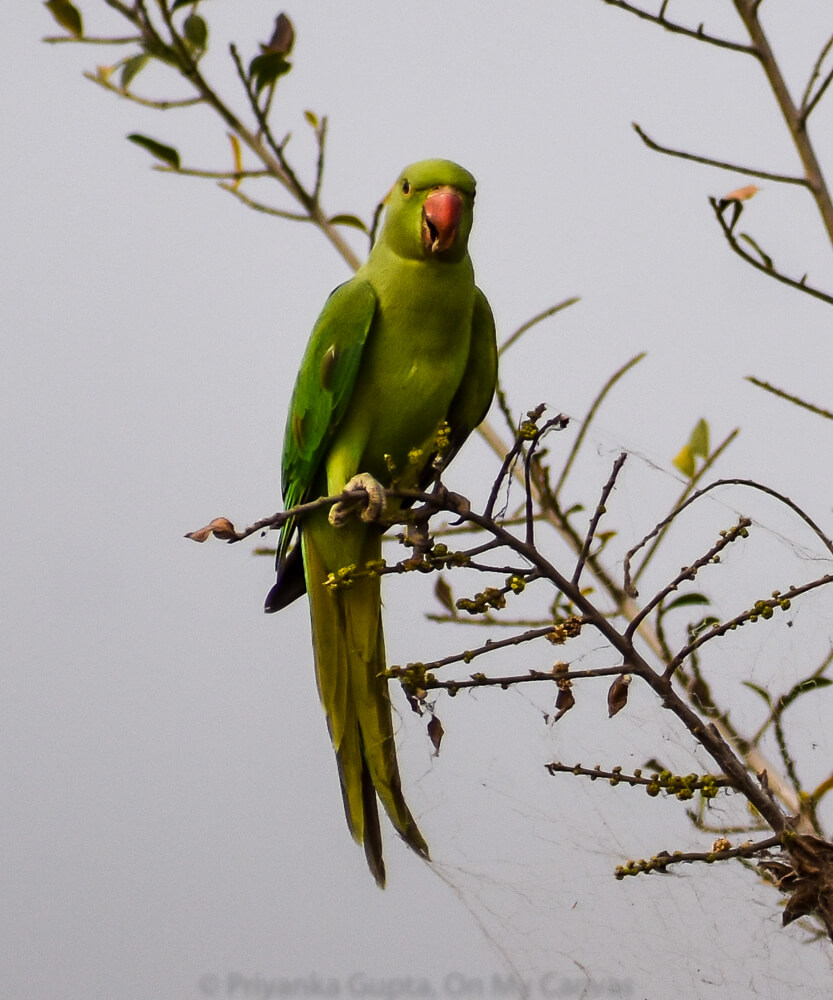
They only left when a kite came above them. When the parrots saw the kite they flew away dropping the berries.
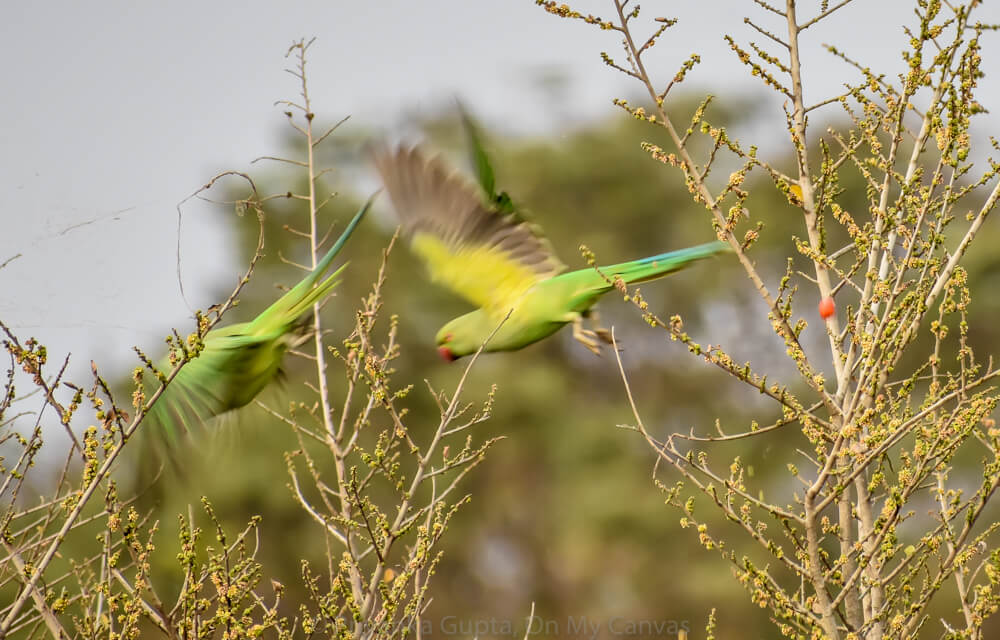
Though I saw the parrot couple only for a few minutes, I knew we would be good friends.
Scene 2, Bangalore Karnataka
We had a African Tulip tree right behind our house. And when the tree was in bloom and its bean-like fruits ripened, Indian ring necked parakeets flew to it in flocks. Here’s one hungry parrot baby bird and her parents.
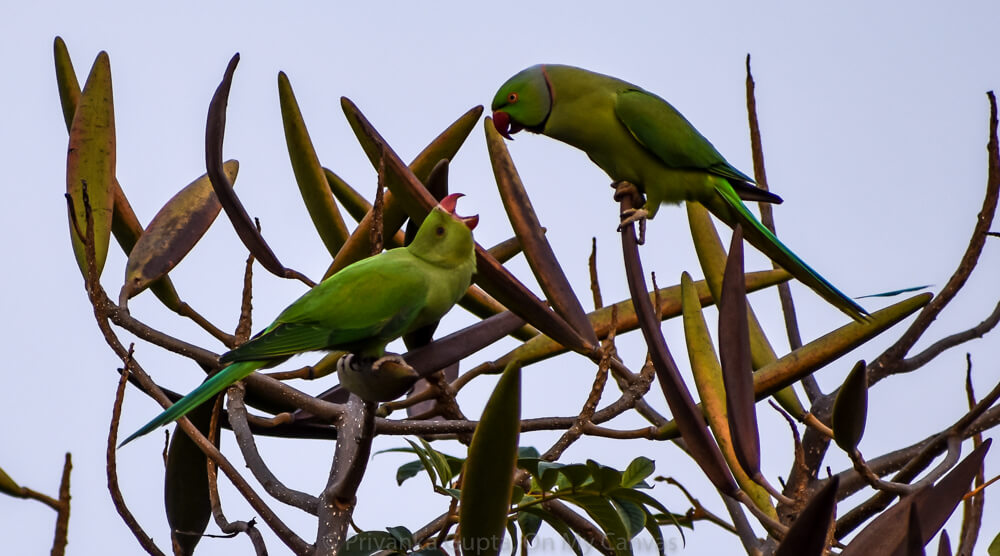
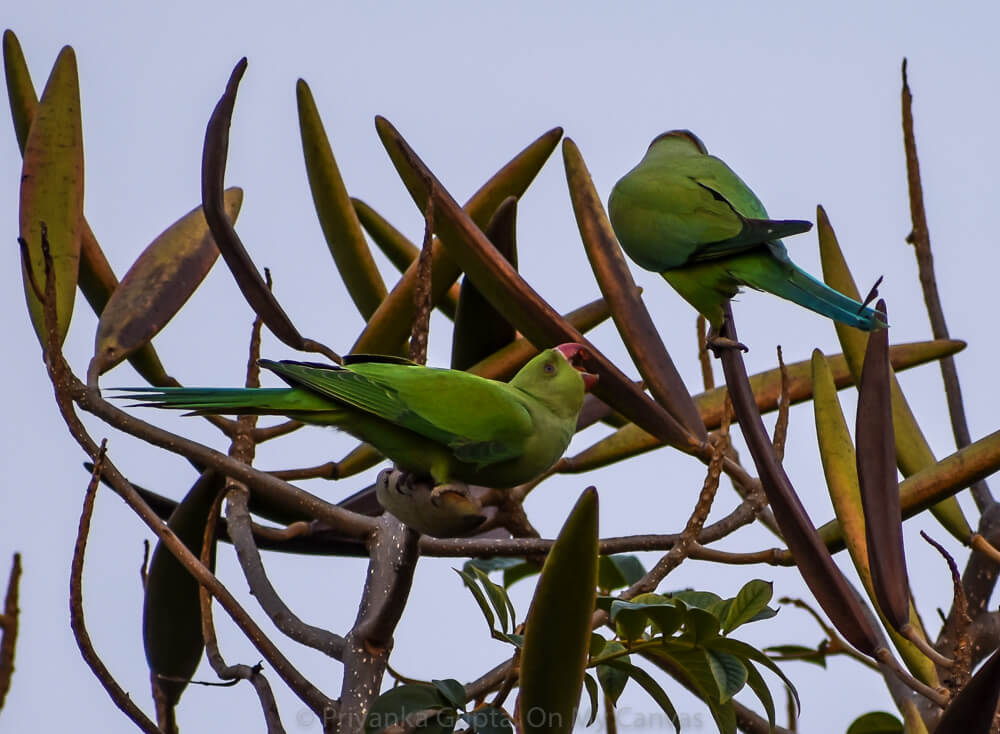
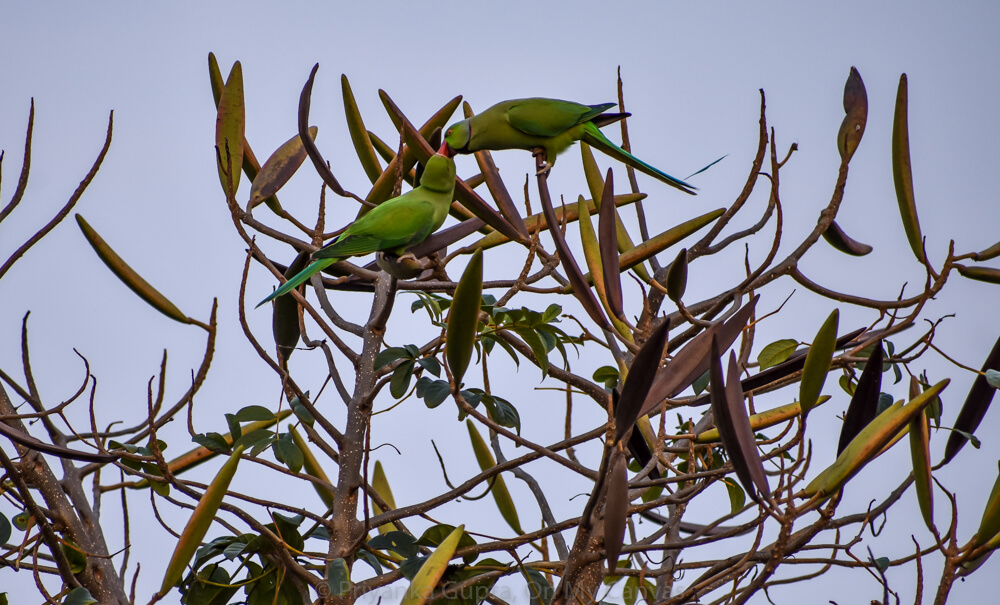
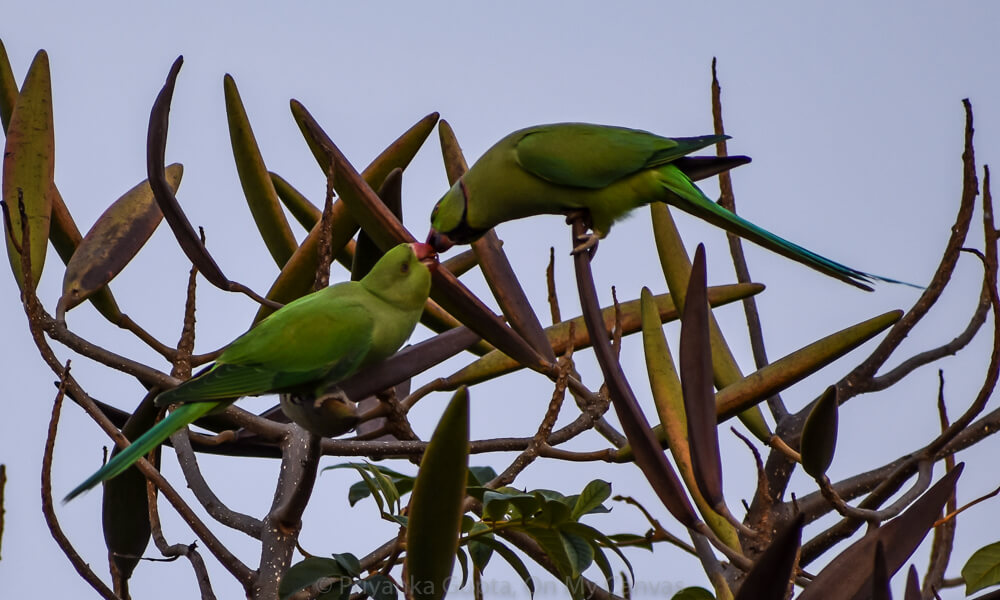
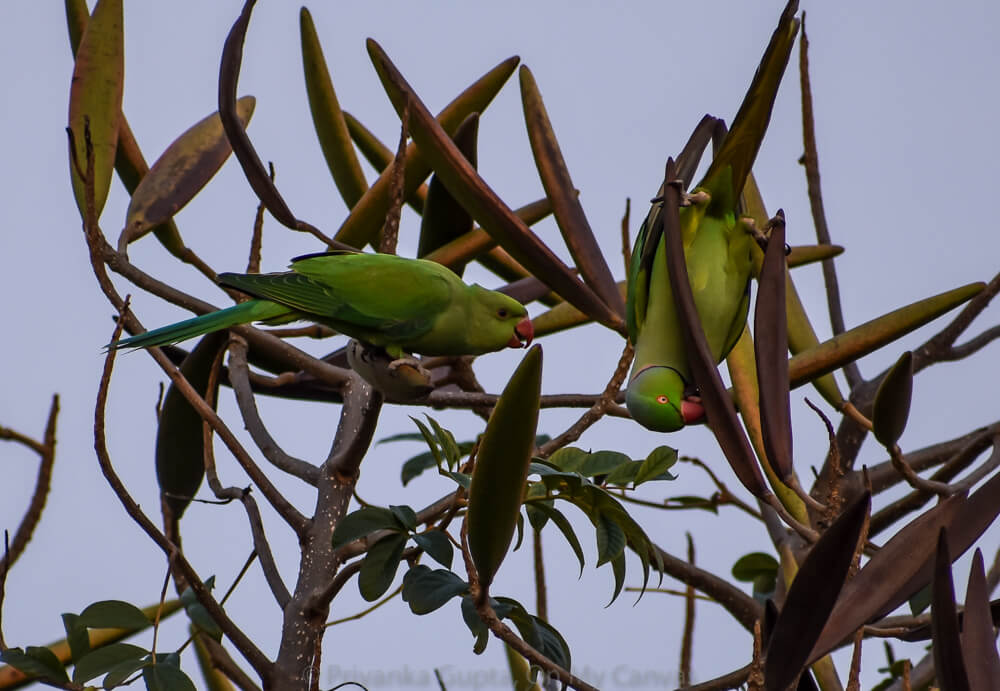
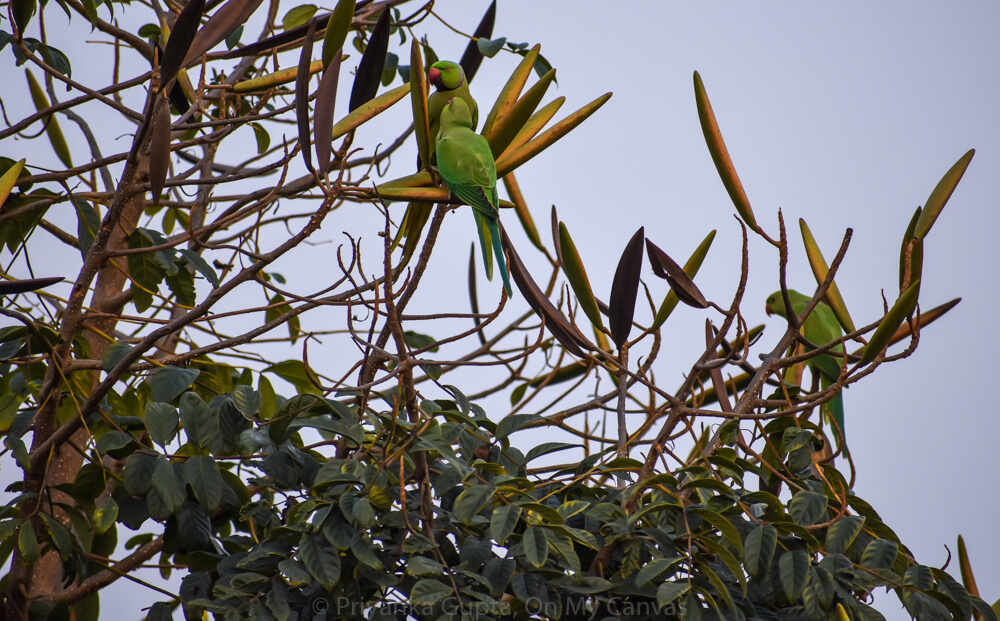
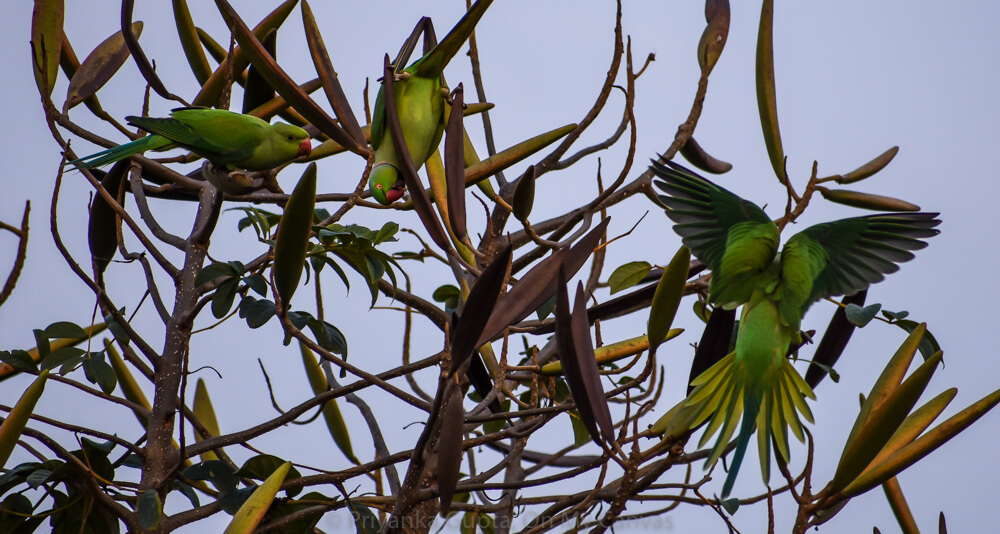
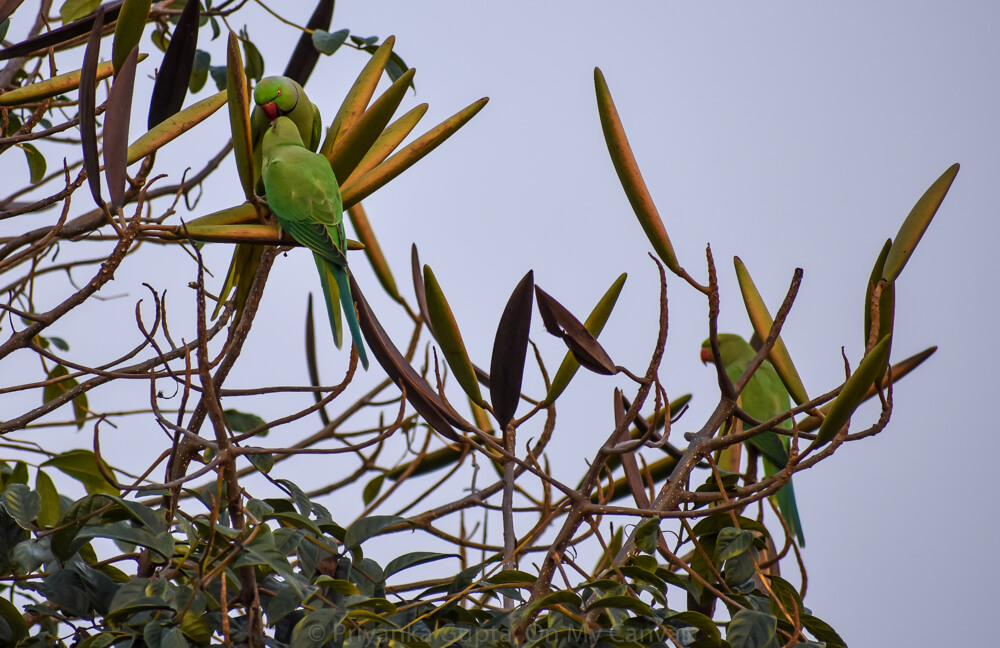
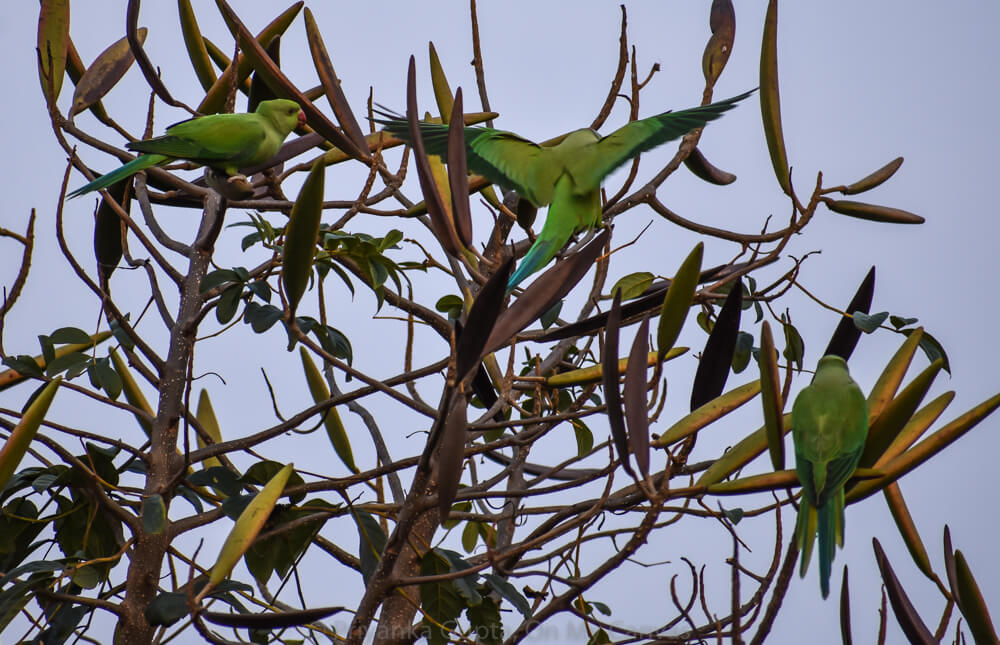
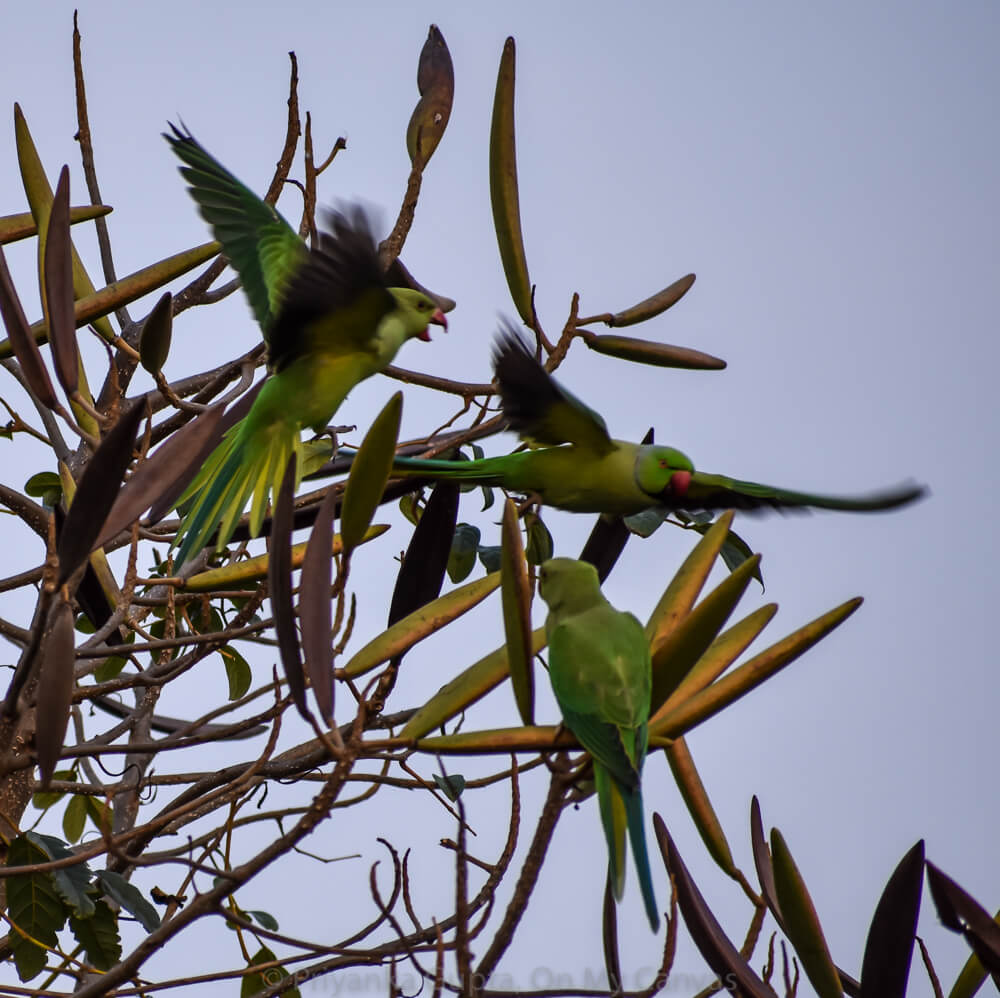
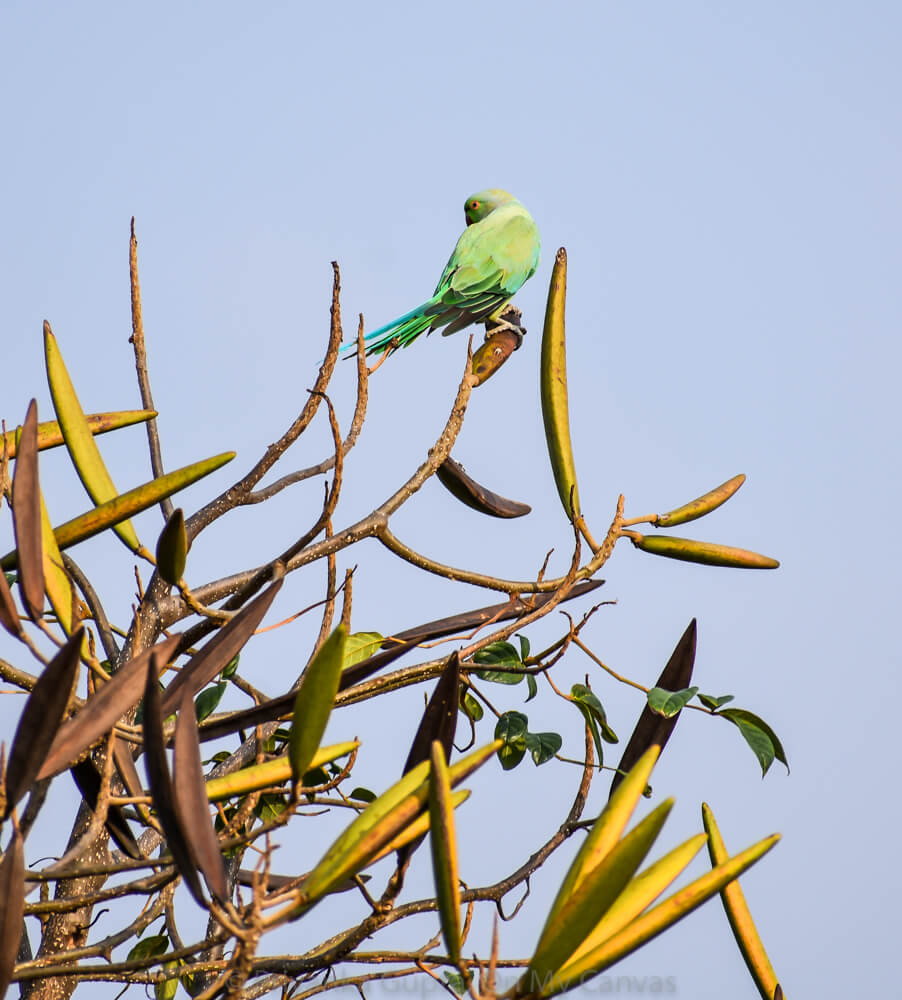
Scene 3, Bangalore Karnataka
The same African Tulip tree with a different set of parents eating out of the ripe fruits. The seed inside the fruit is like white cotton.
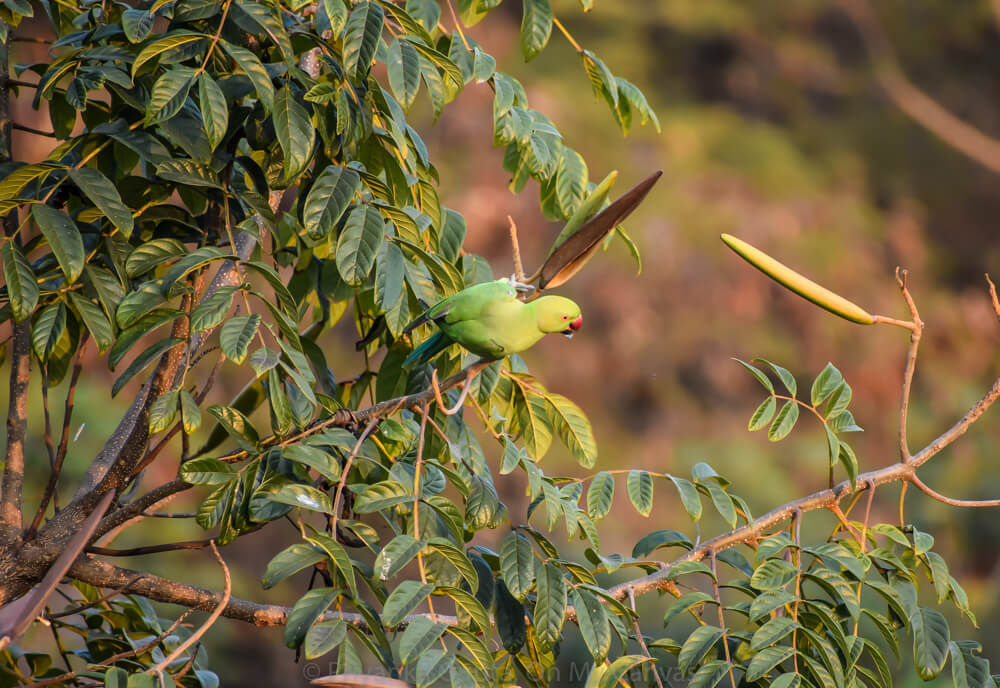
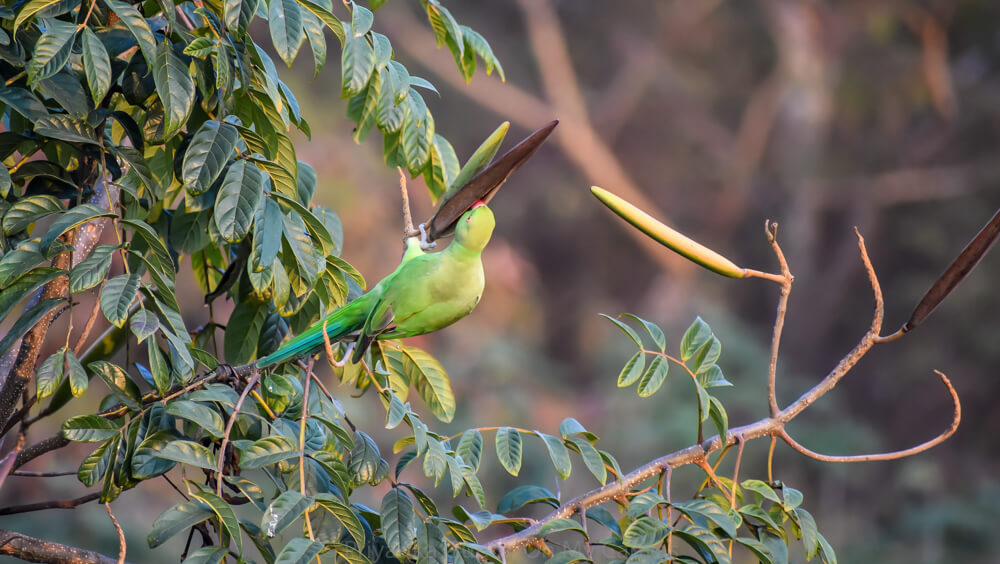
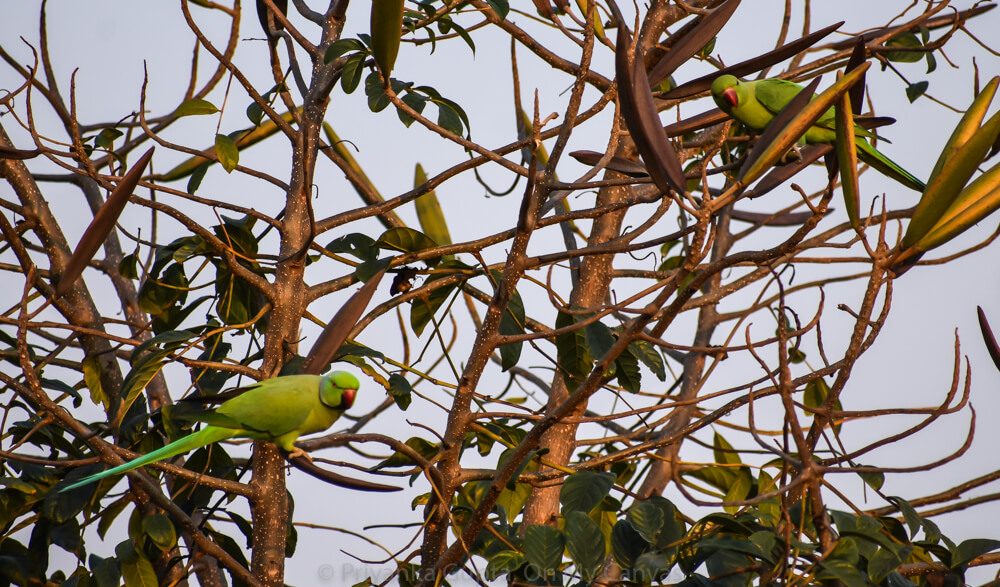
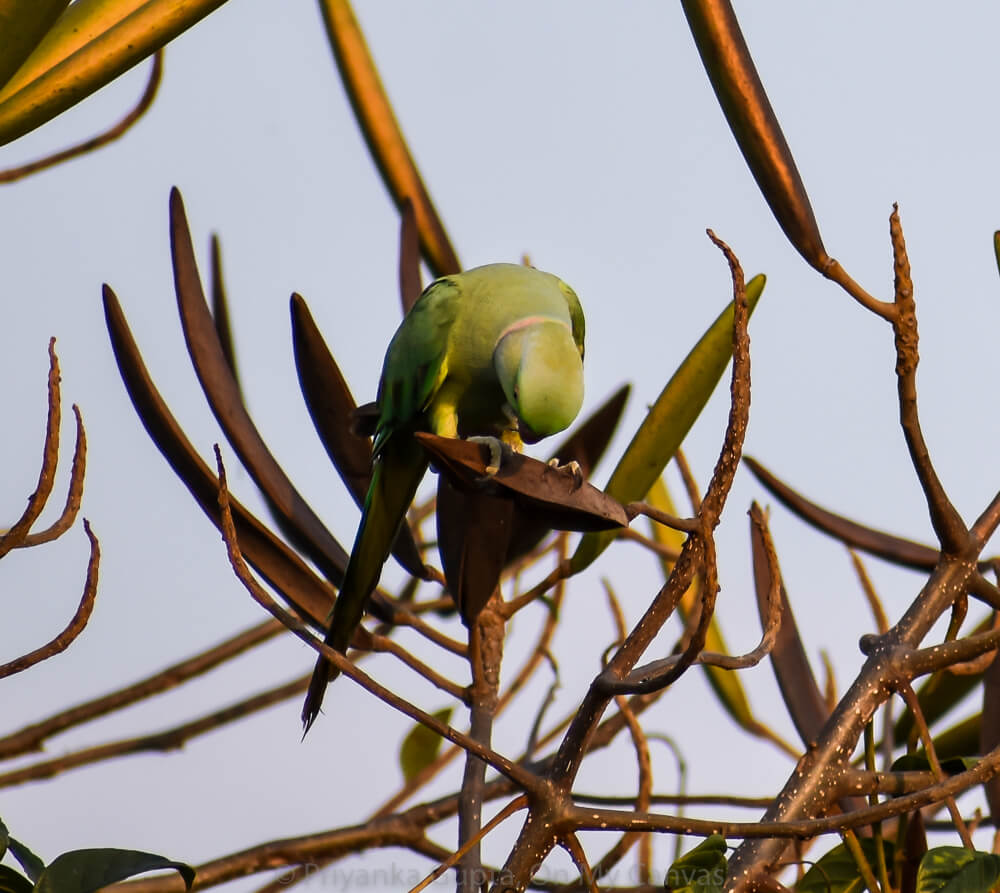
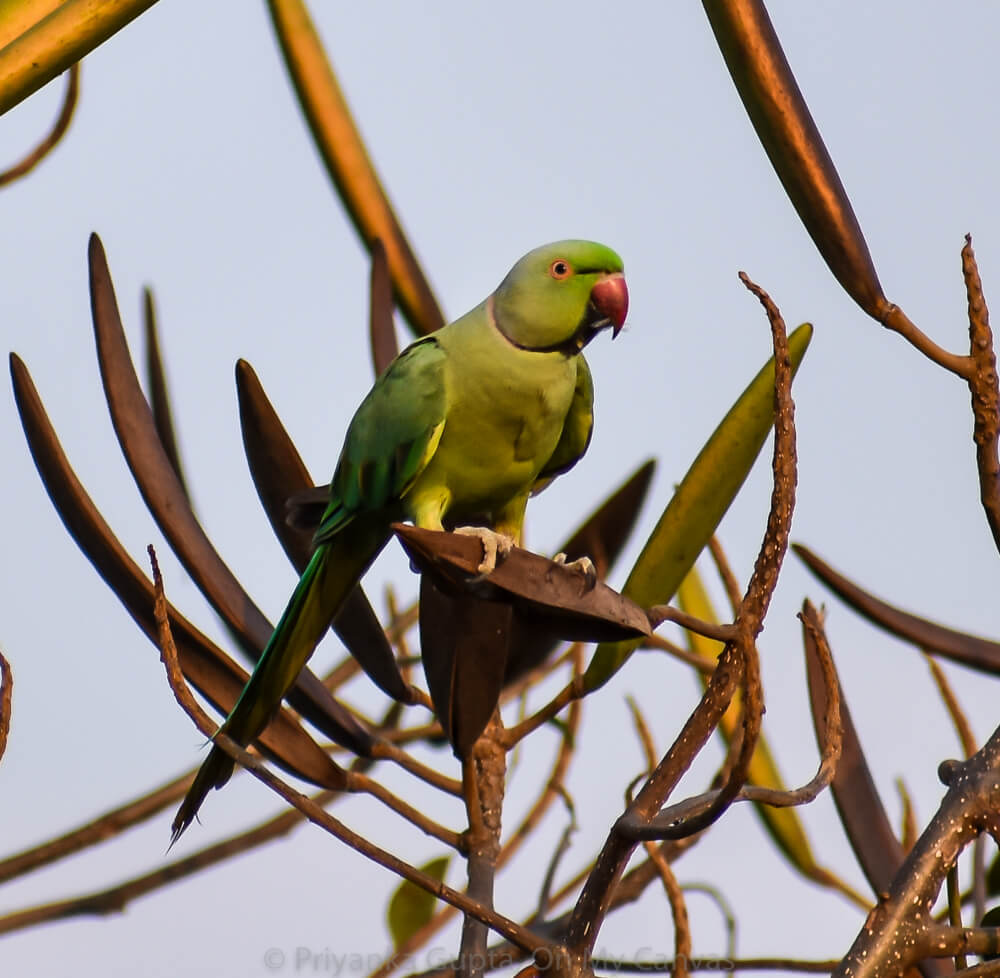
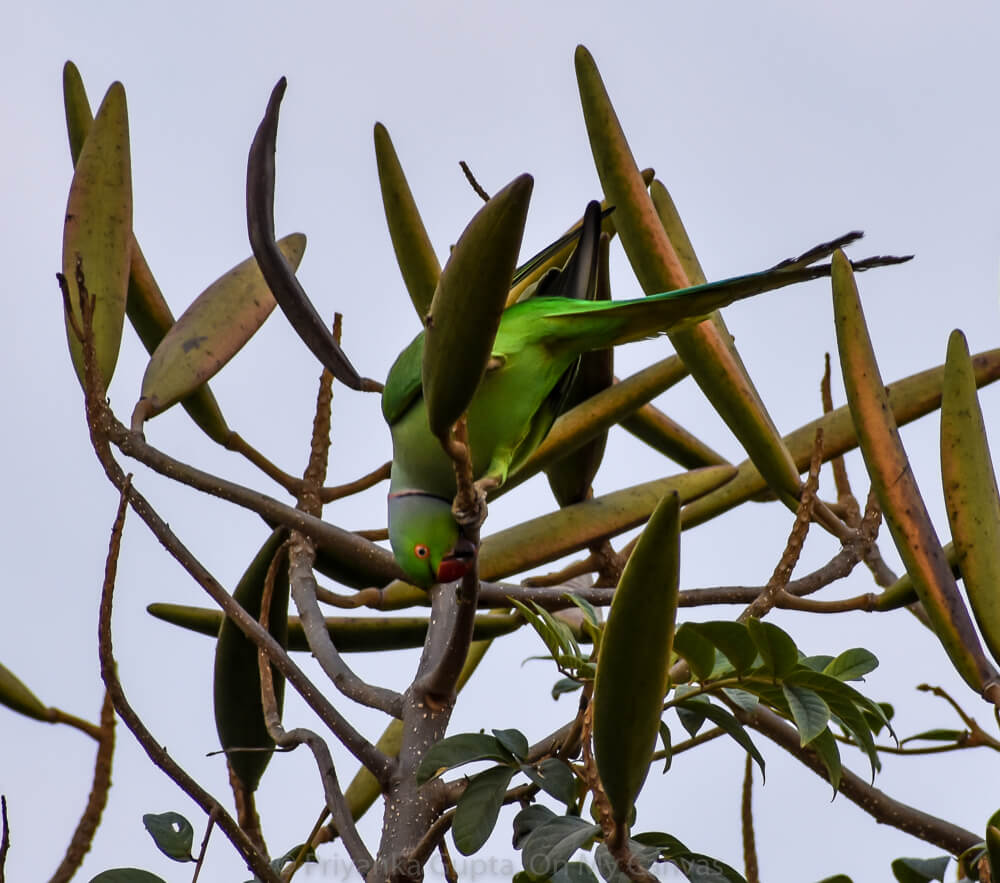
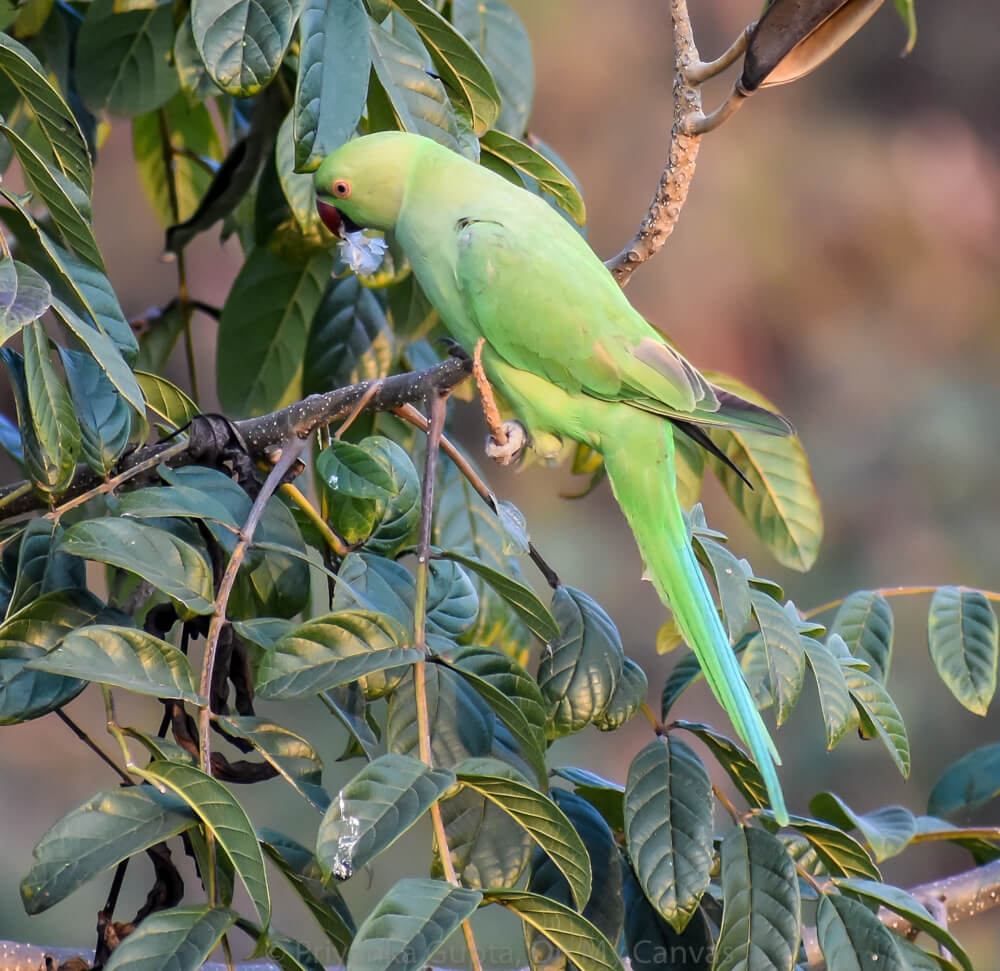
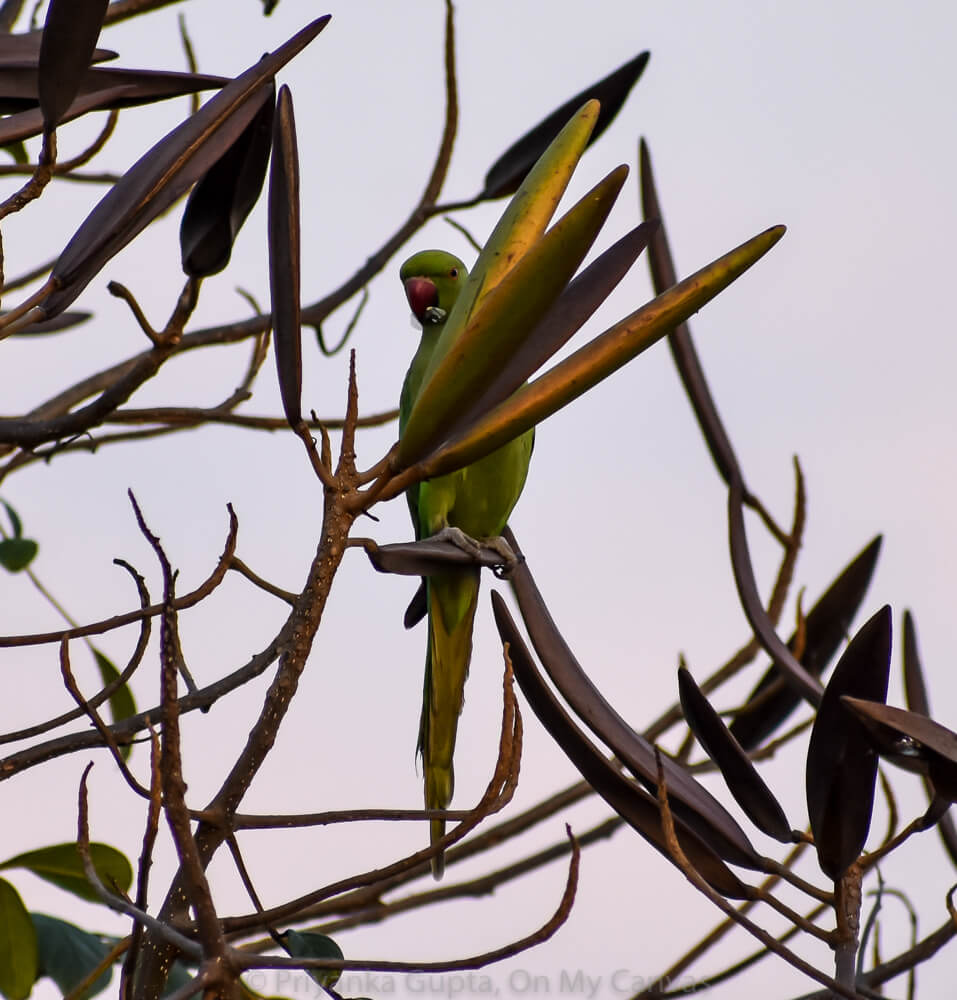
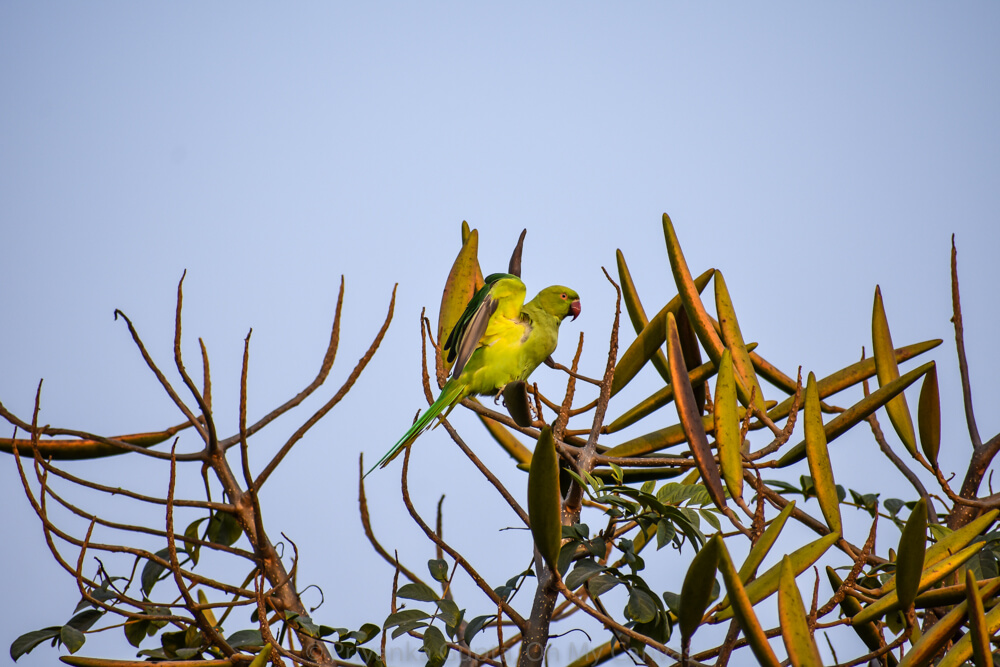
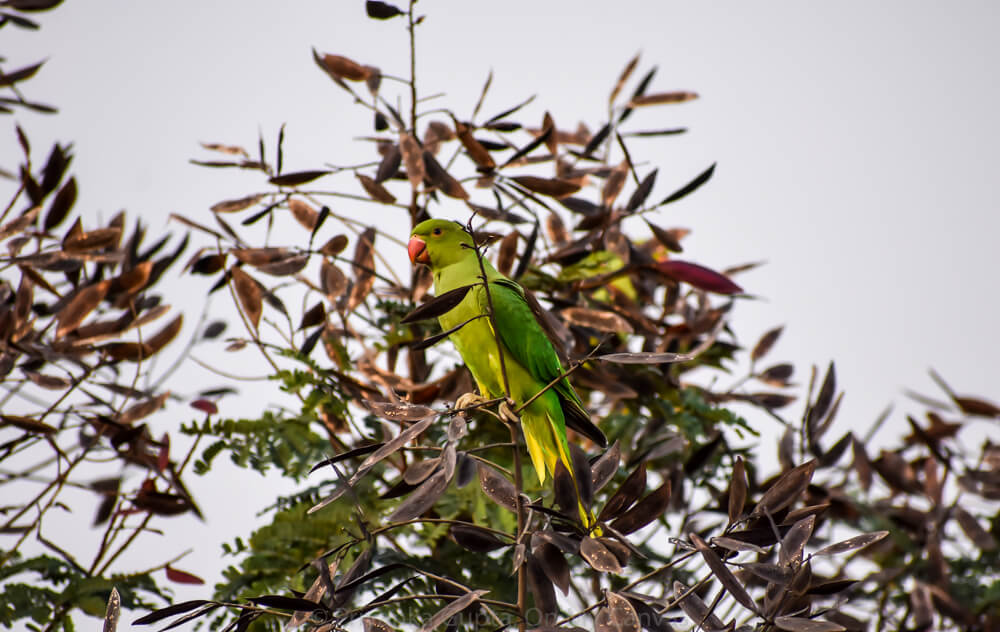
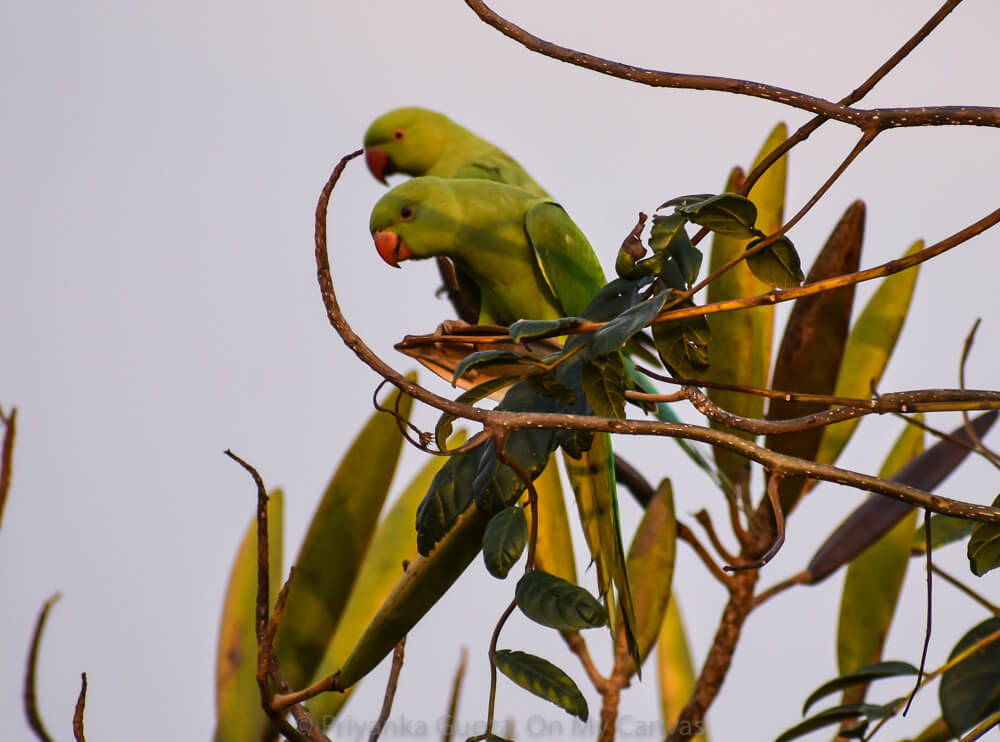
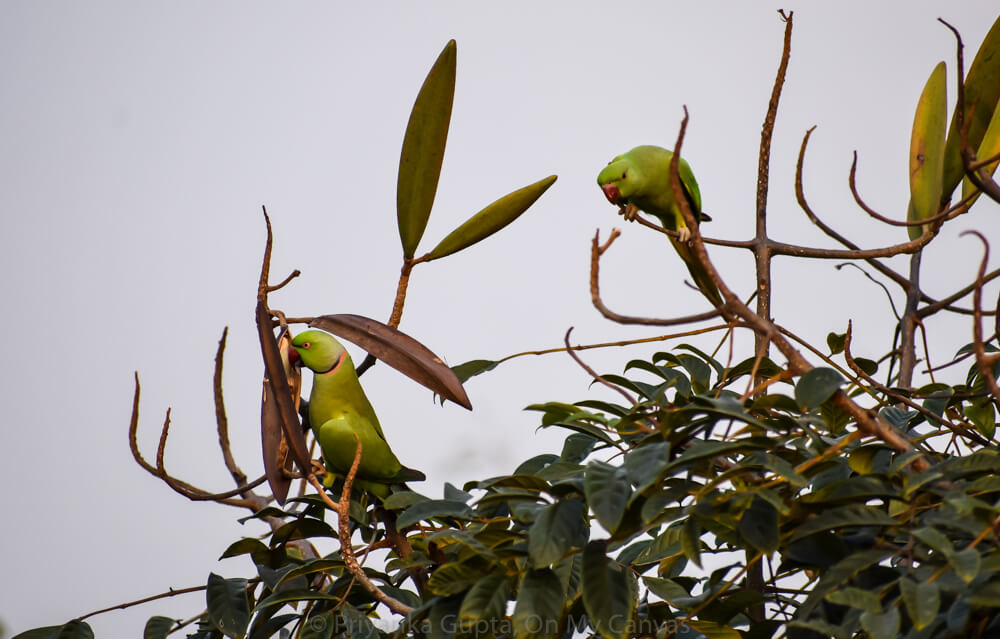
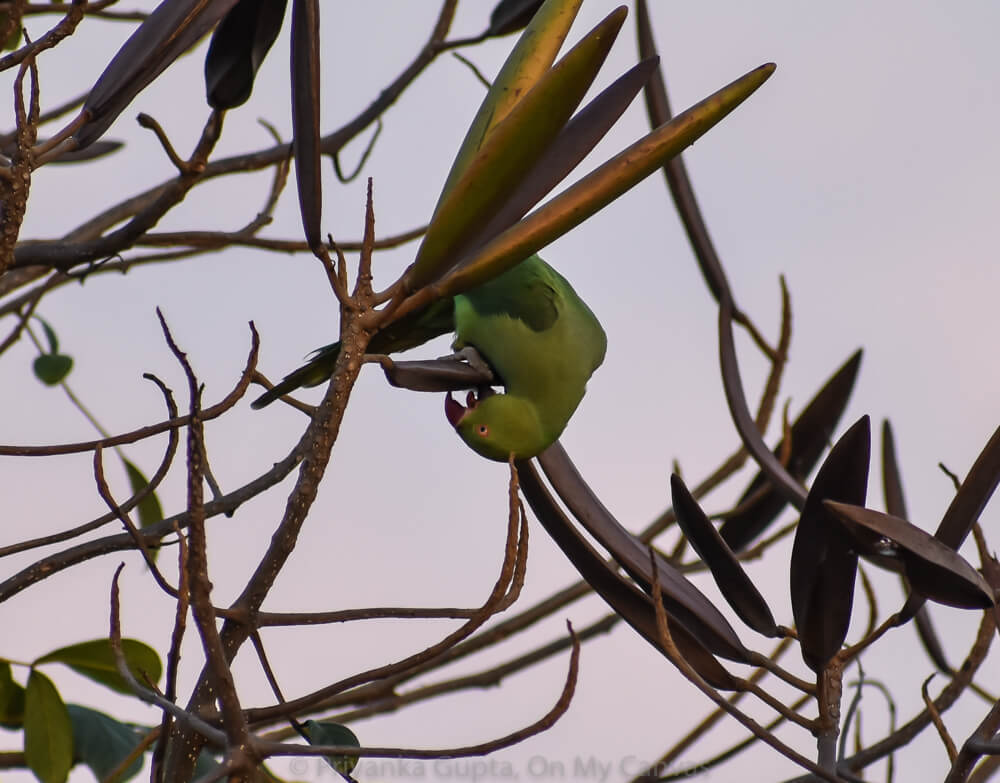
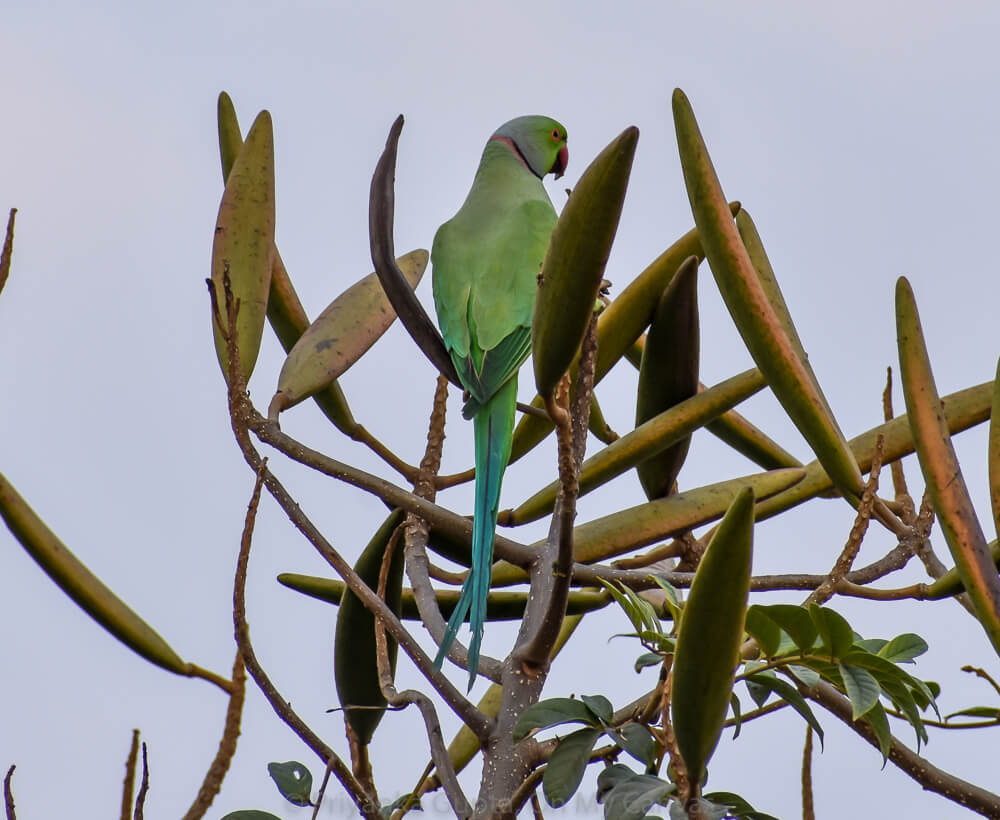
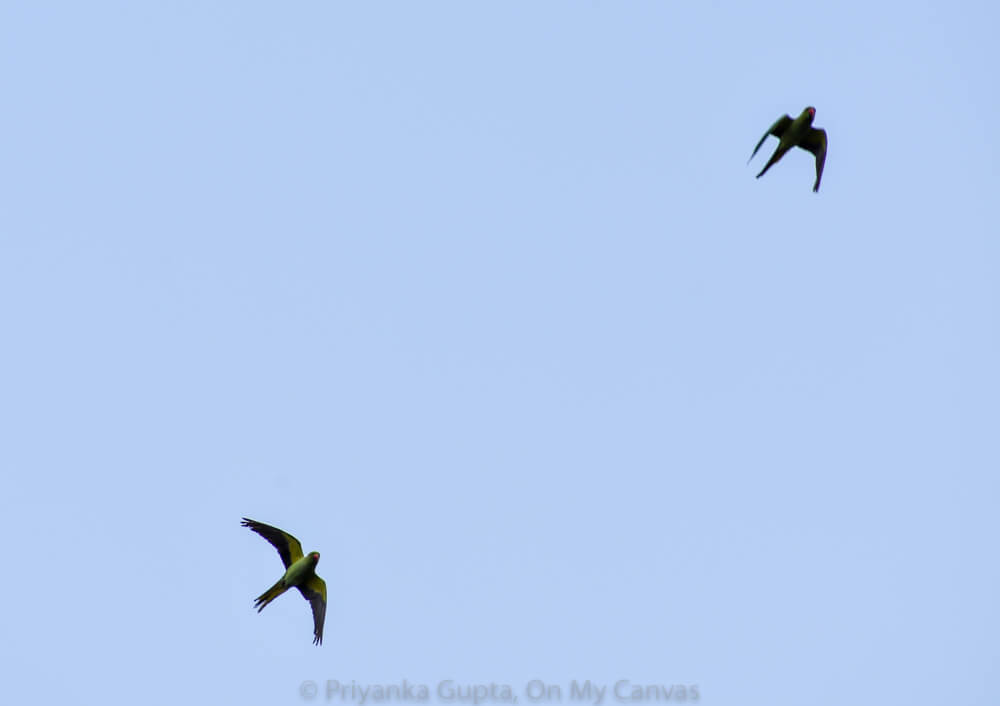
Scene 4, Mandi, Himachal Pradesh
Our hotel was on the banks of the Beas river in Mandi. From my balcony, I could see the river. On the many tall trees rising out of the river perched big groups of Alexandrine parakeets (the red stripes on the wings). We were there in the rainy season so the birds sat quietly on the trees getting soaked in the rain. I watched them for hours. Seeing the Alexandrine parrots so up close above a gorgeous misty river was really pleasing.
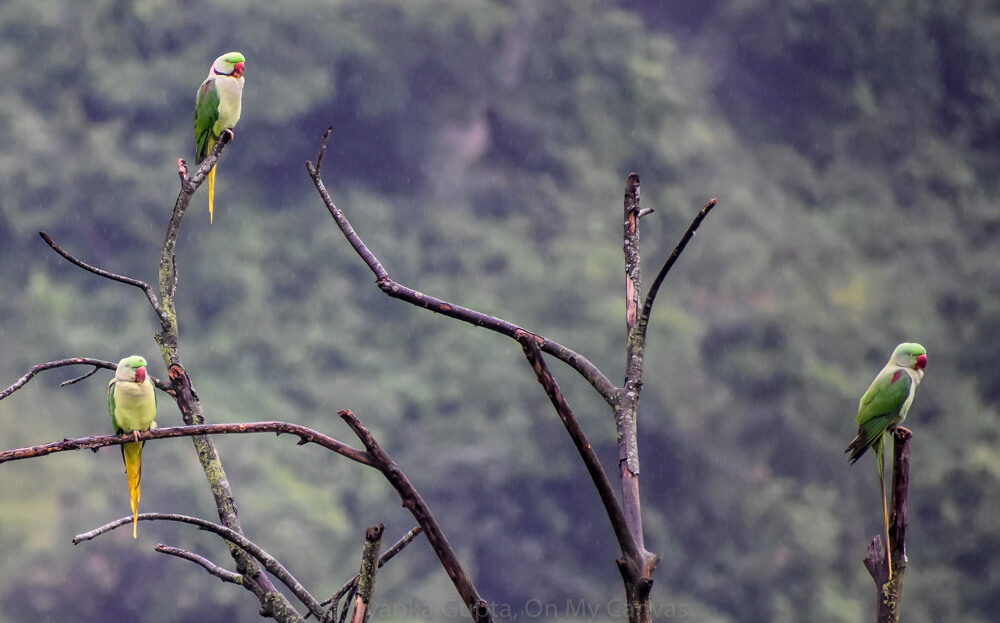
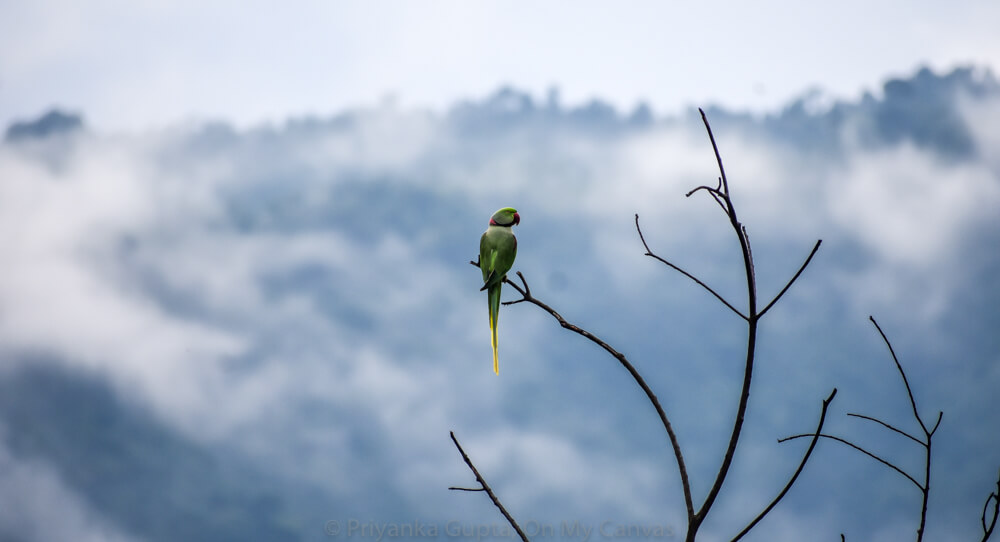
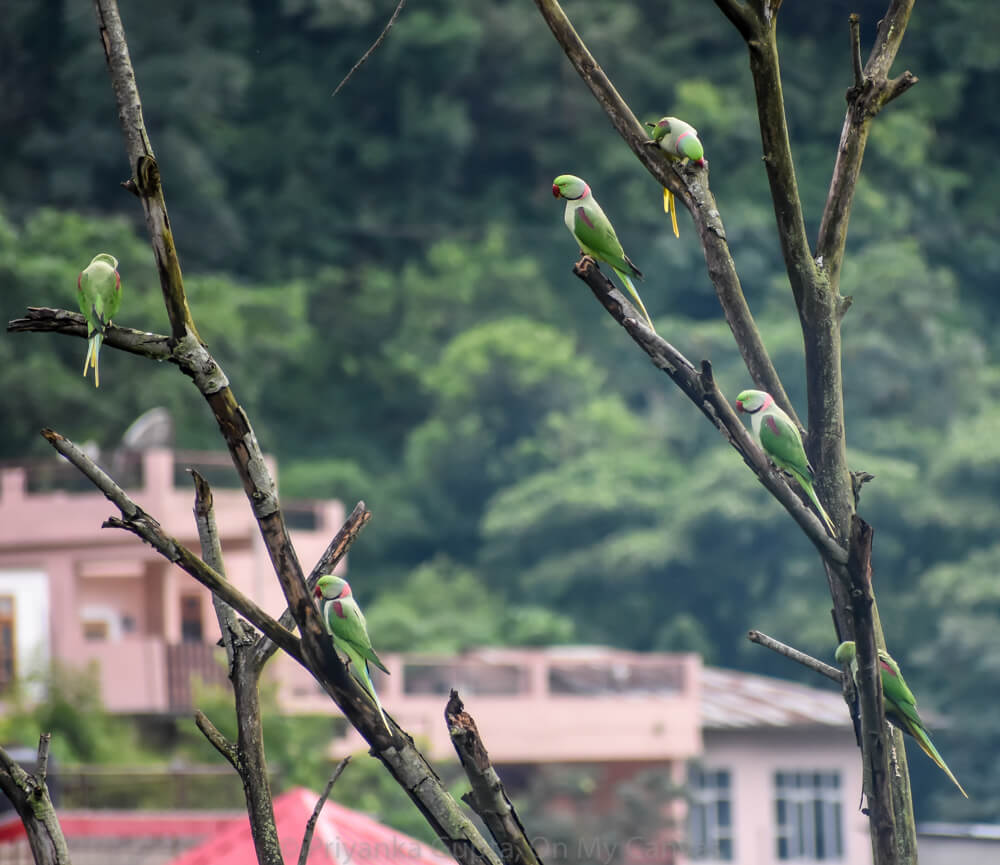
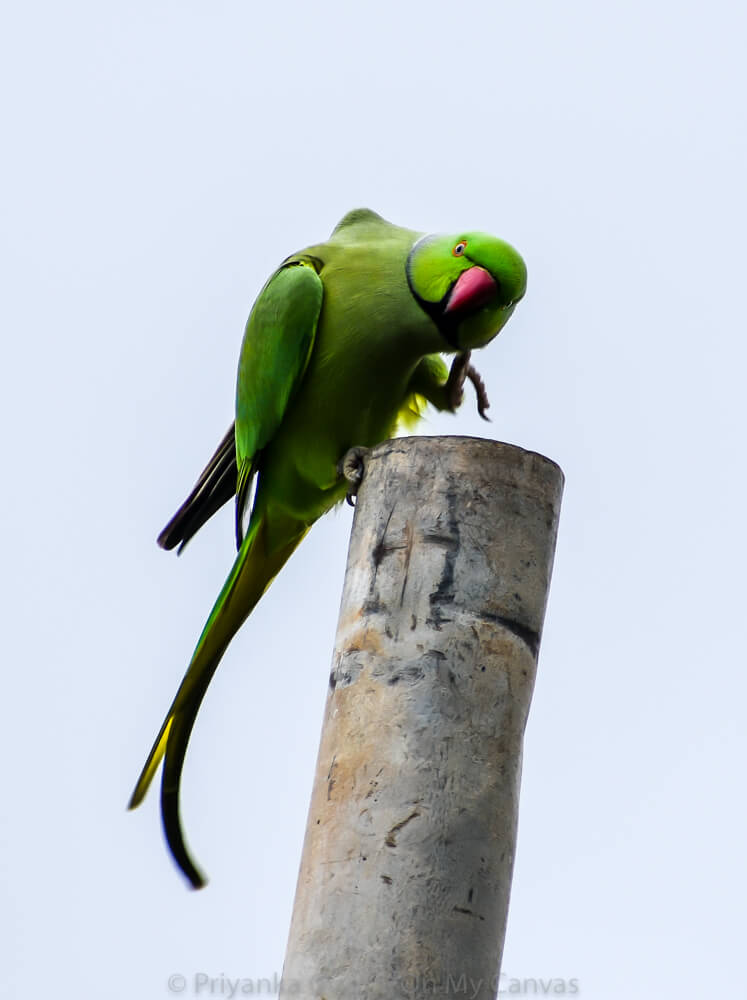
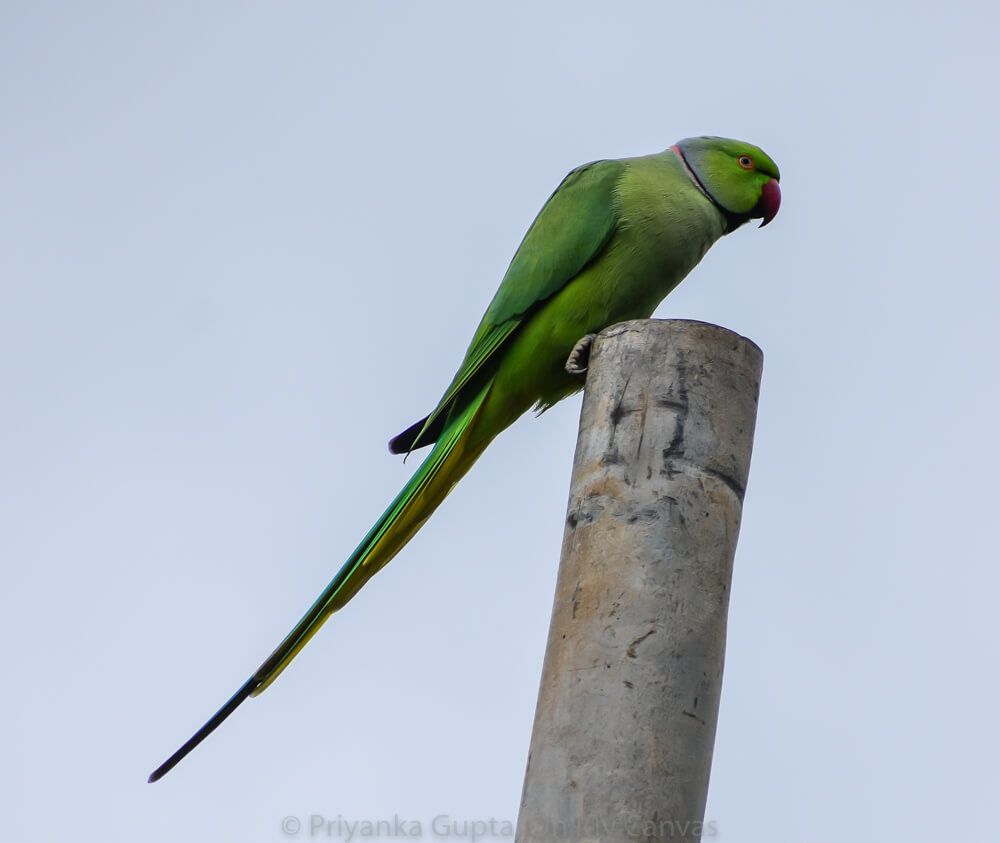
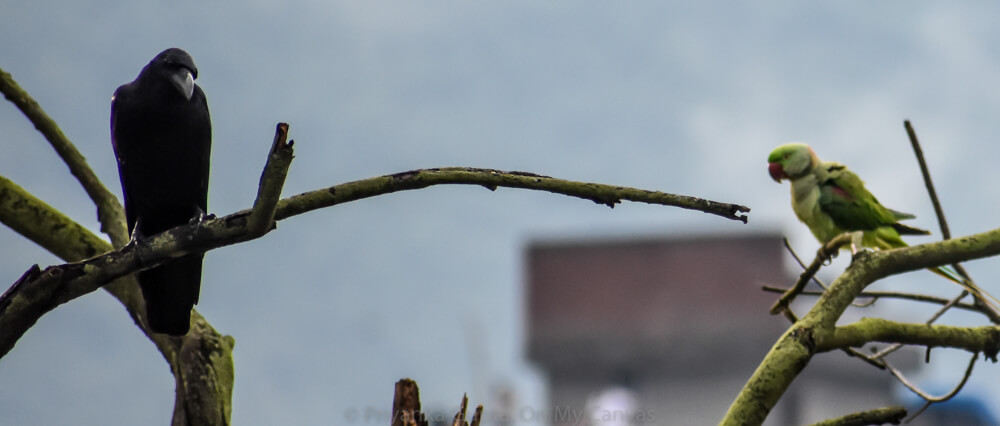
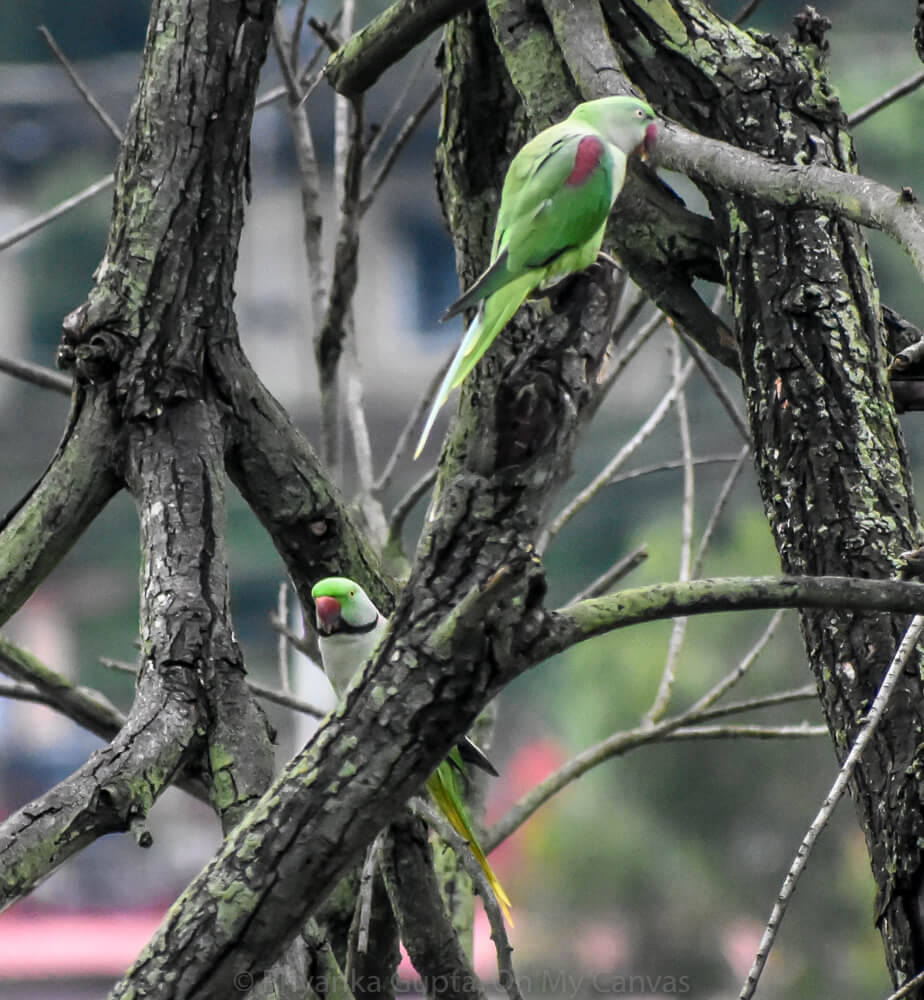
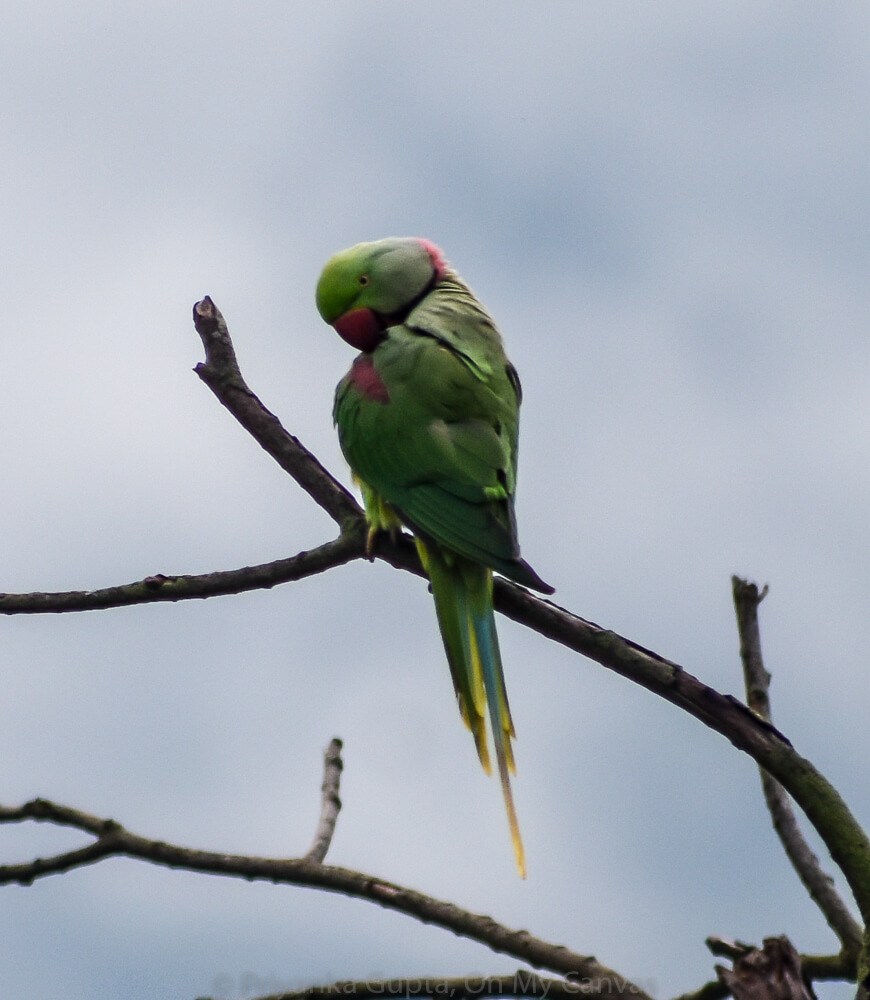
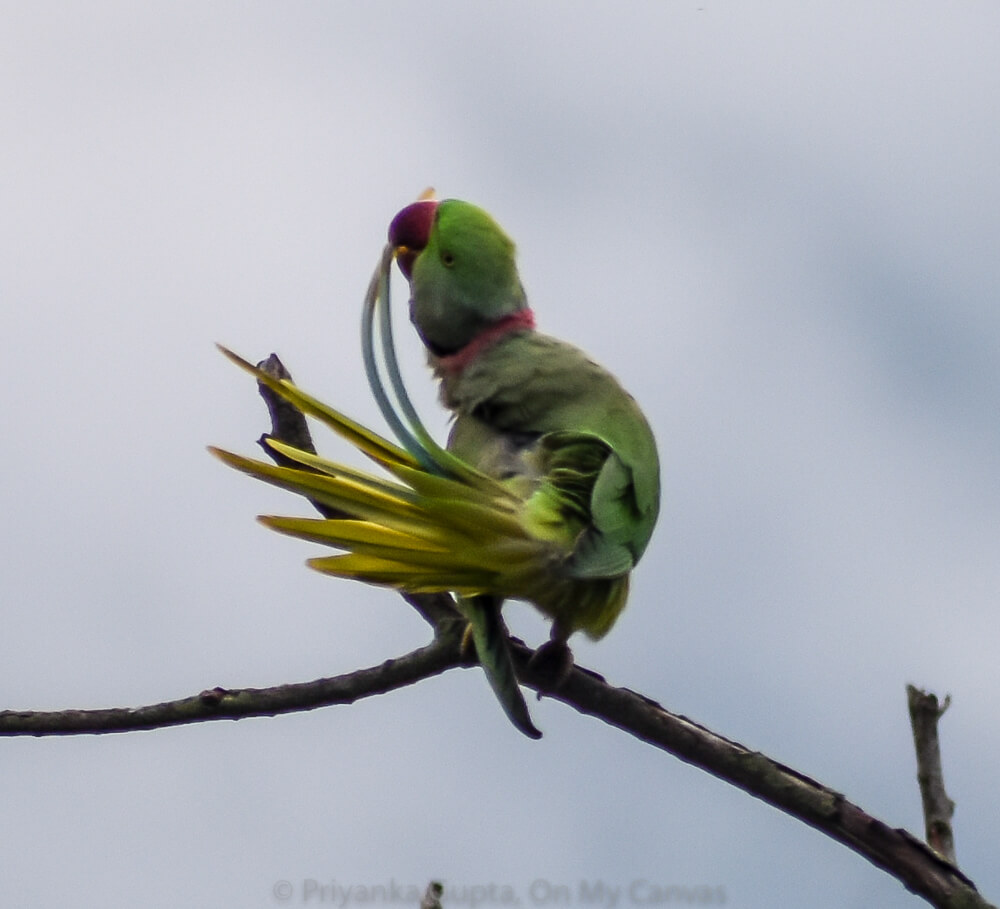
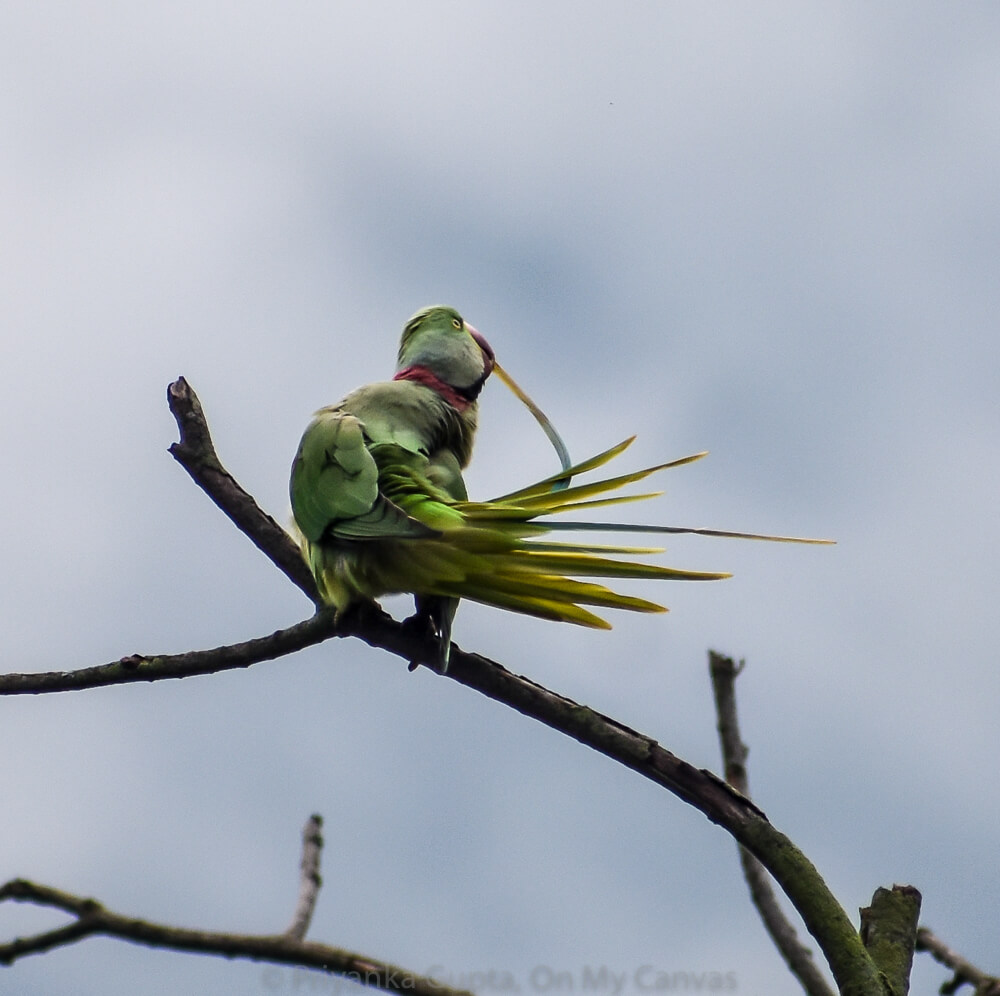
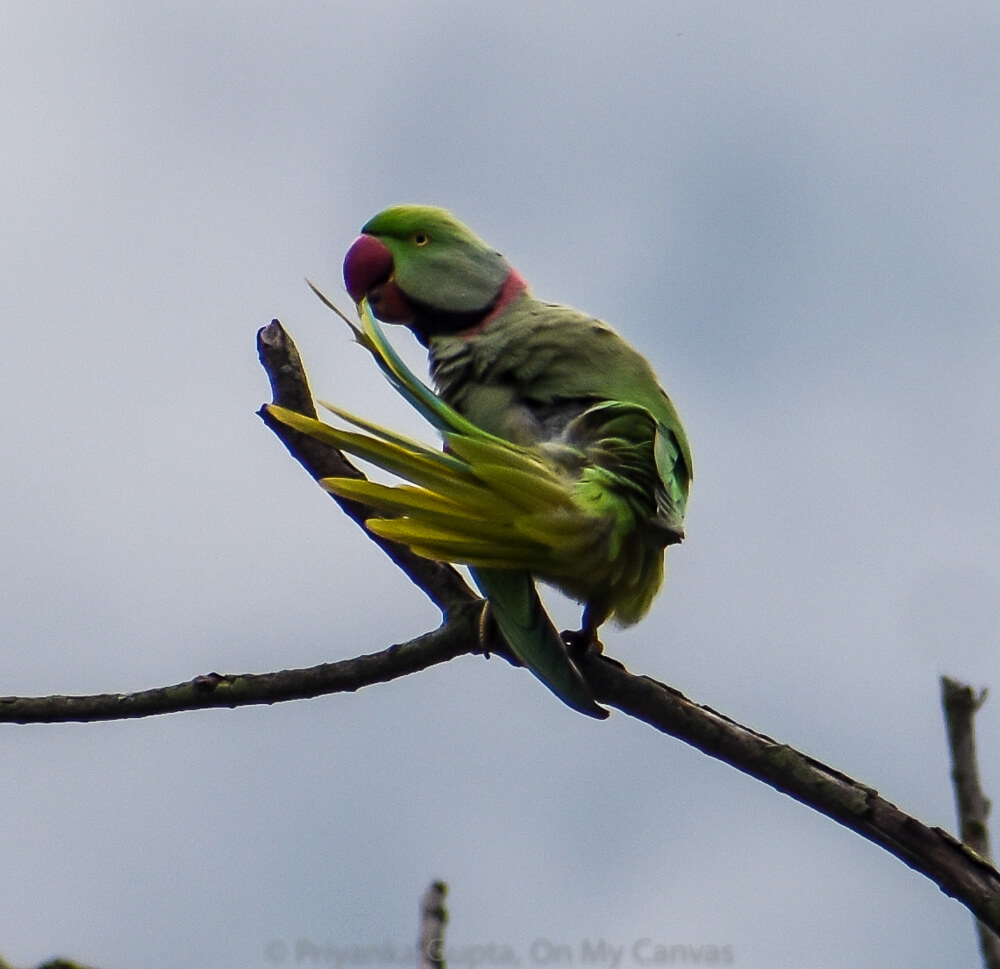
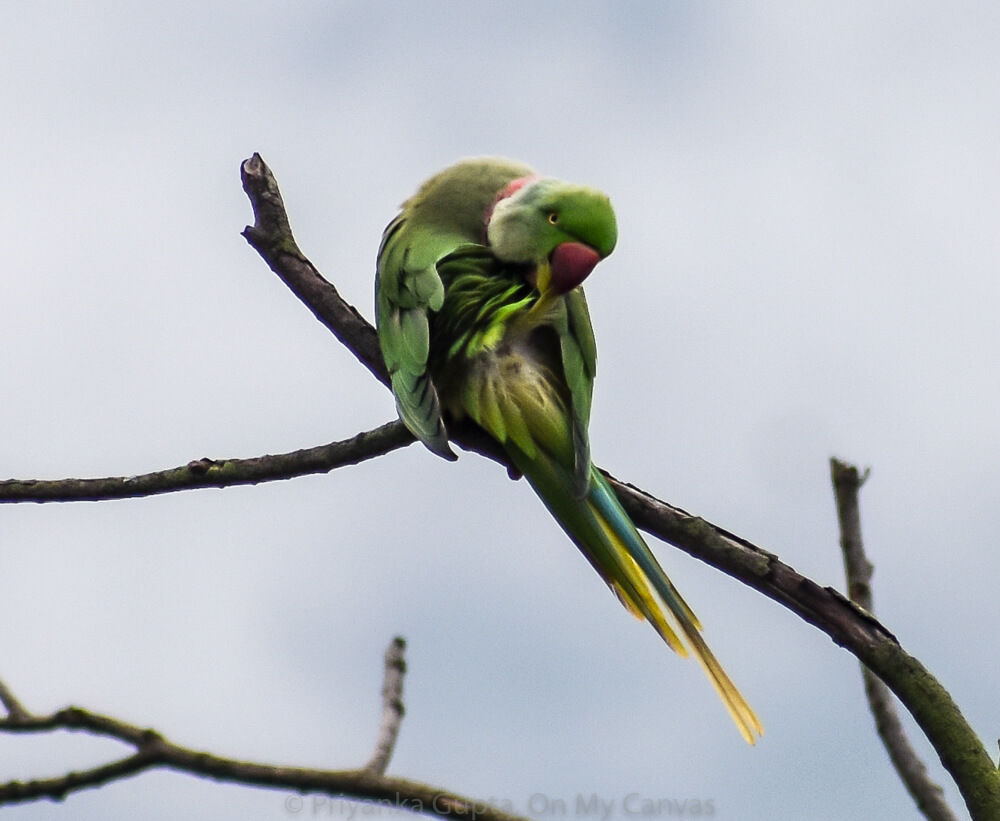
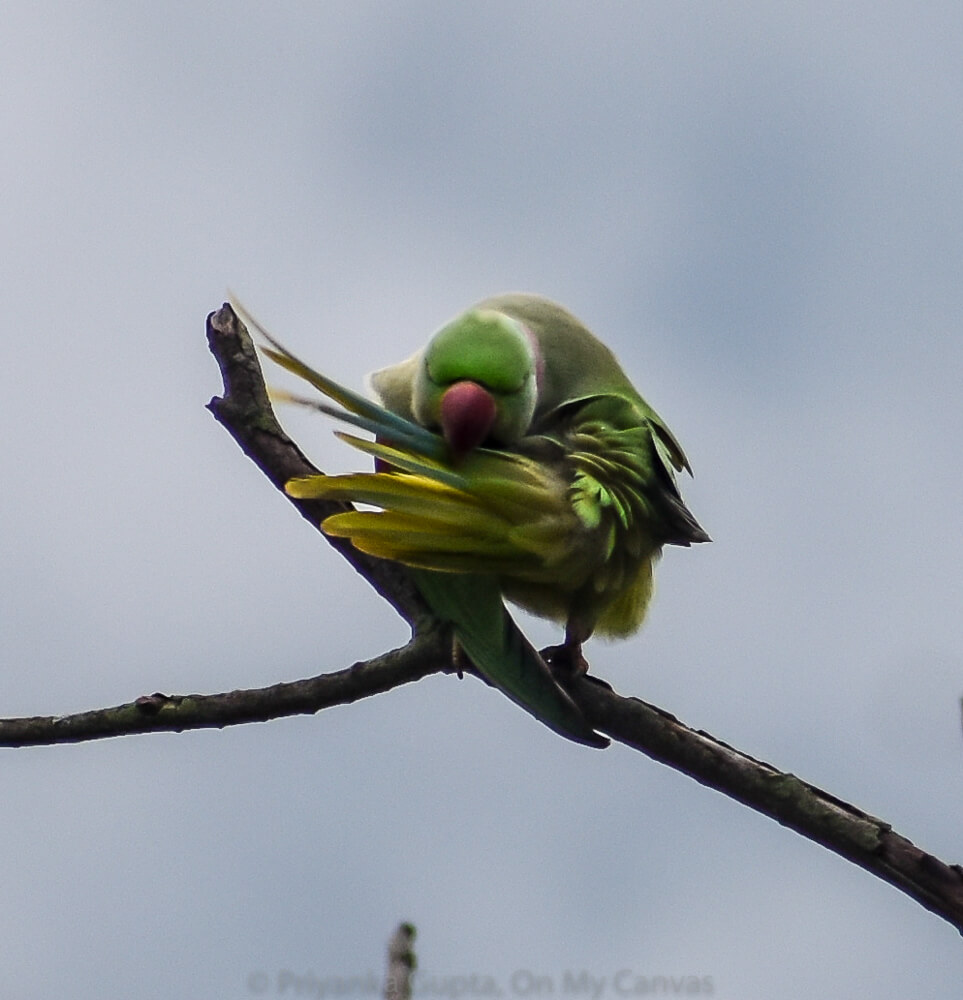
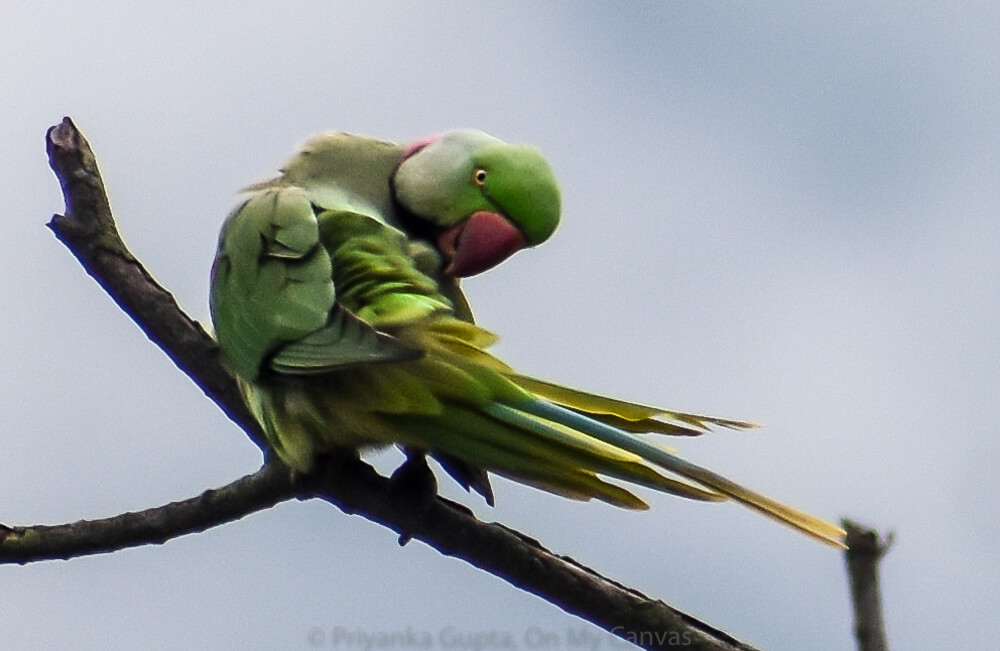
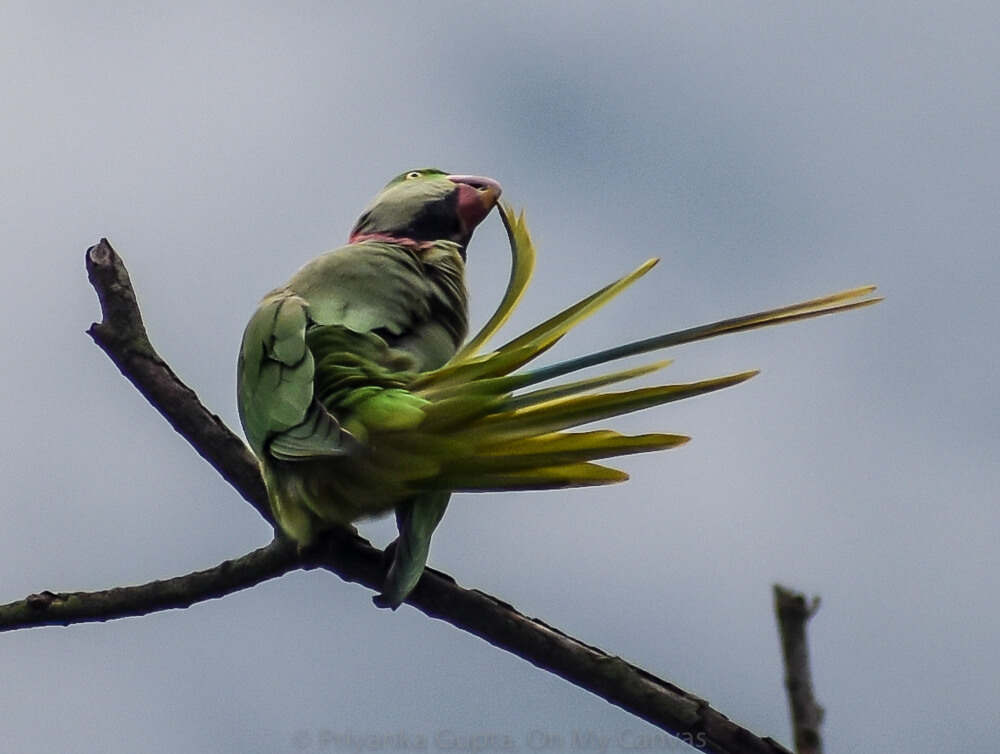
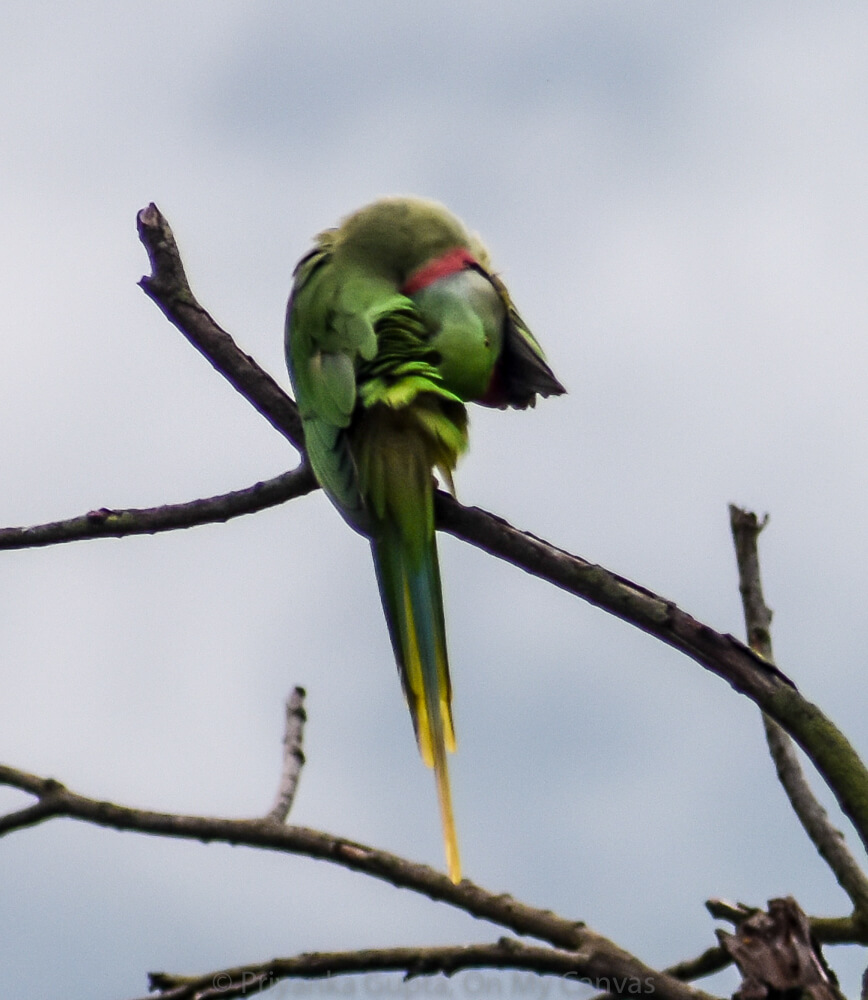
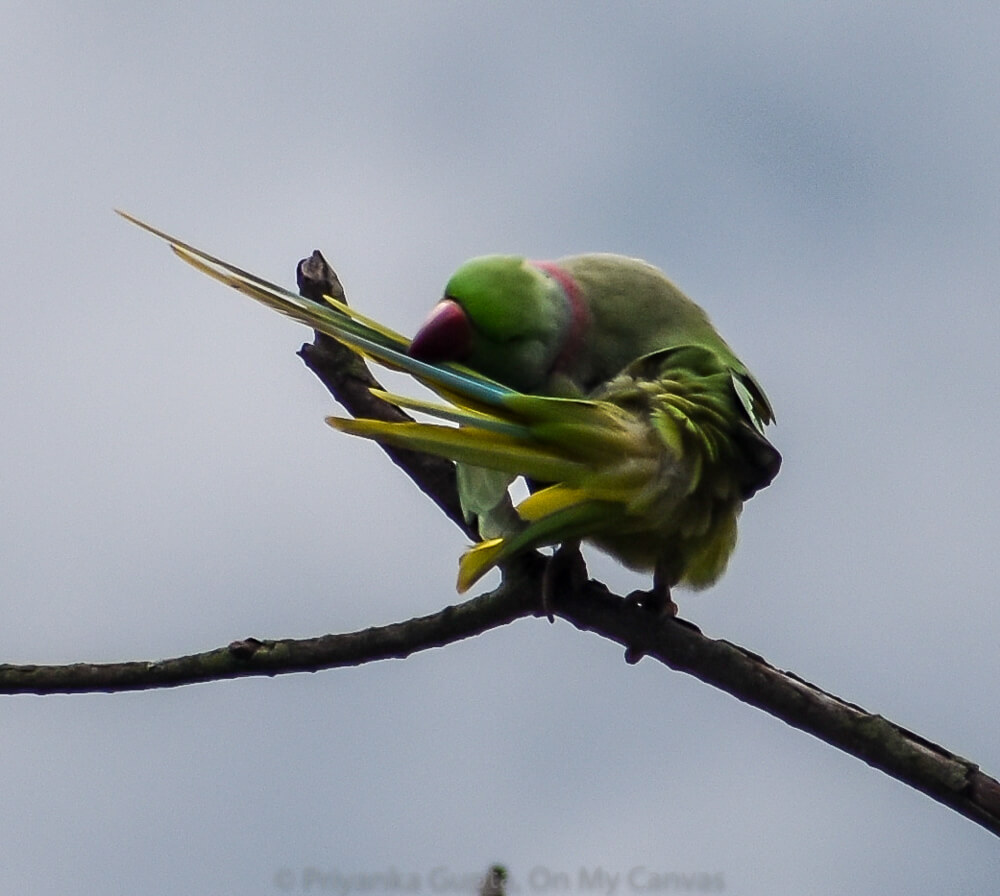
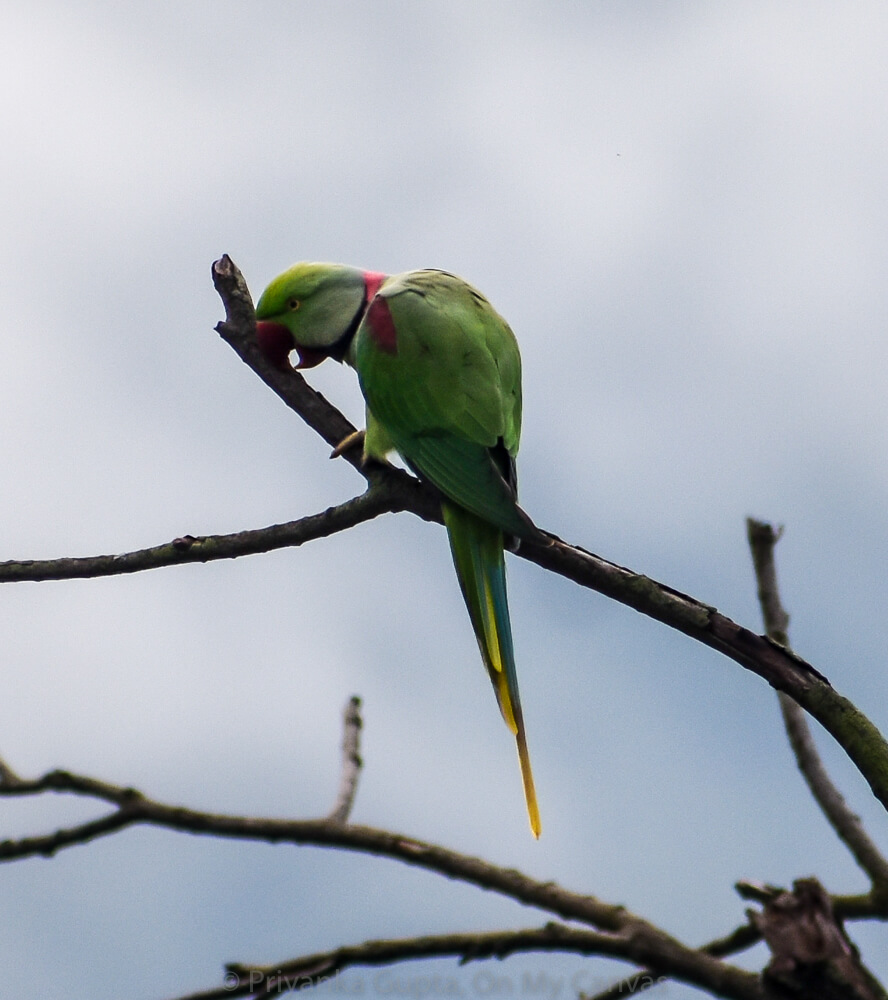
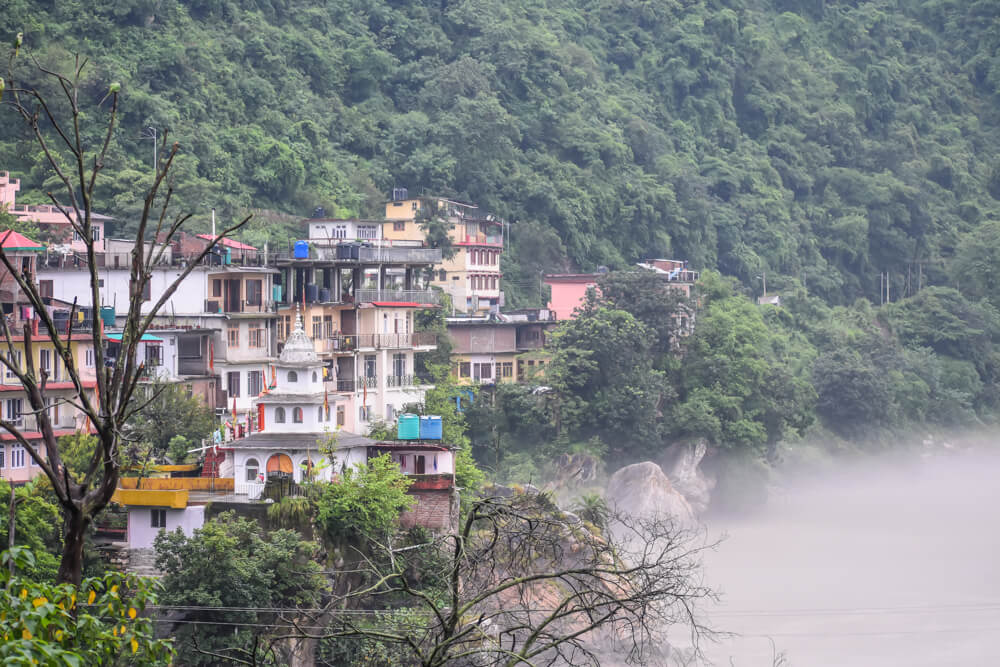
Would you buy an Indian ringneck parakeet if you see one or would you put out seeds and grains so the wild parrots grow wilder?
*****
My much-awaited travel memoir
Journeys Beyond and Within…
is here!
In my usual self-deprecating, vivid narrative style (that you love so much, ahem), I have put out my most unusual and challenging adventures. Embarrassingly honest, witty, and introspective, the book will entertain you if not also inspire you to travel, rediscover home, and leap over the boundaries.
Grab your copy now!
Ebook, paperback, and hardcase available on Amazon worldwide. Make some ice tea and get reading 🙂
*****
*****
Want similar inspiration and ideas in your inbox? Subscribe to my free weekly newsletter "Looking Inwards"!

